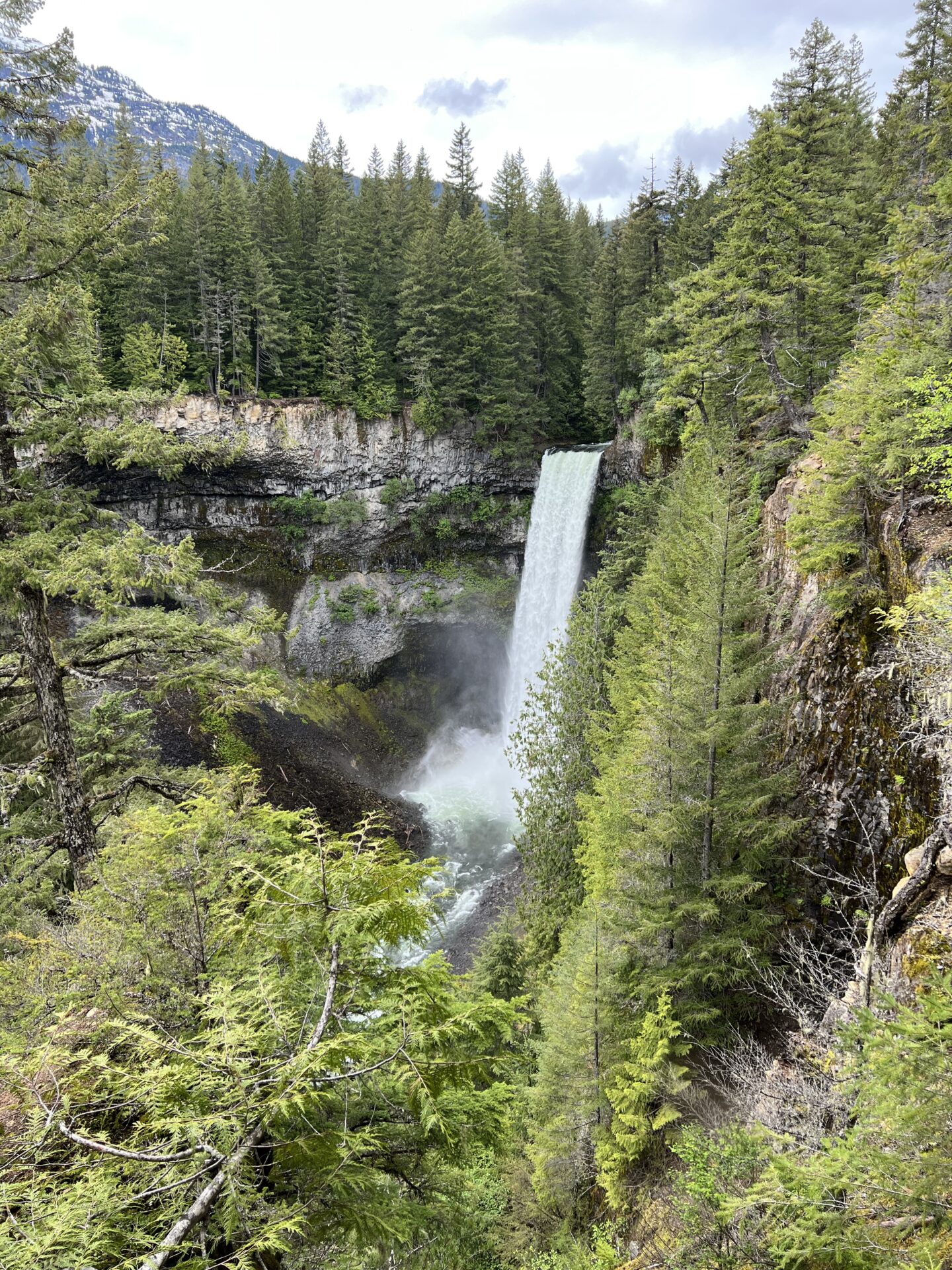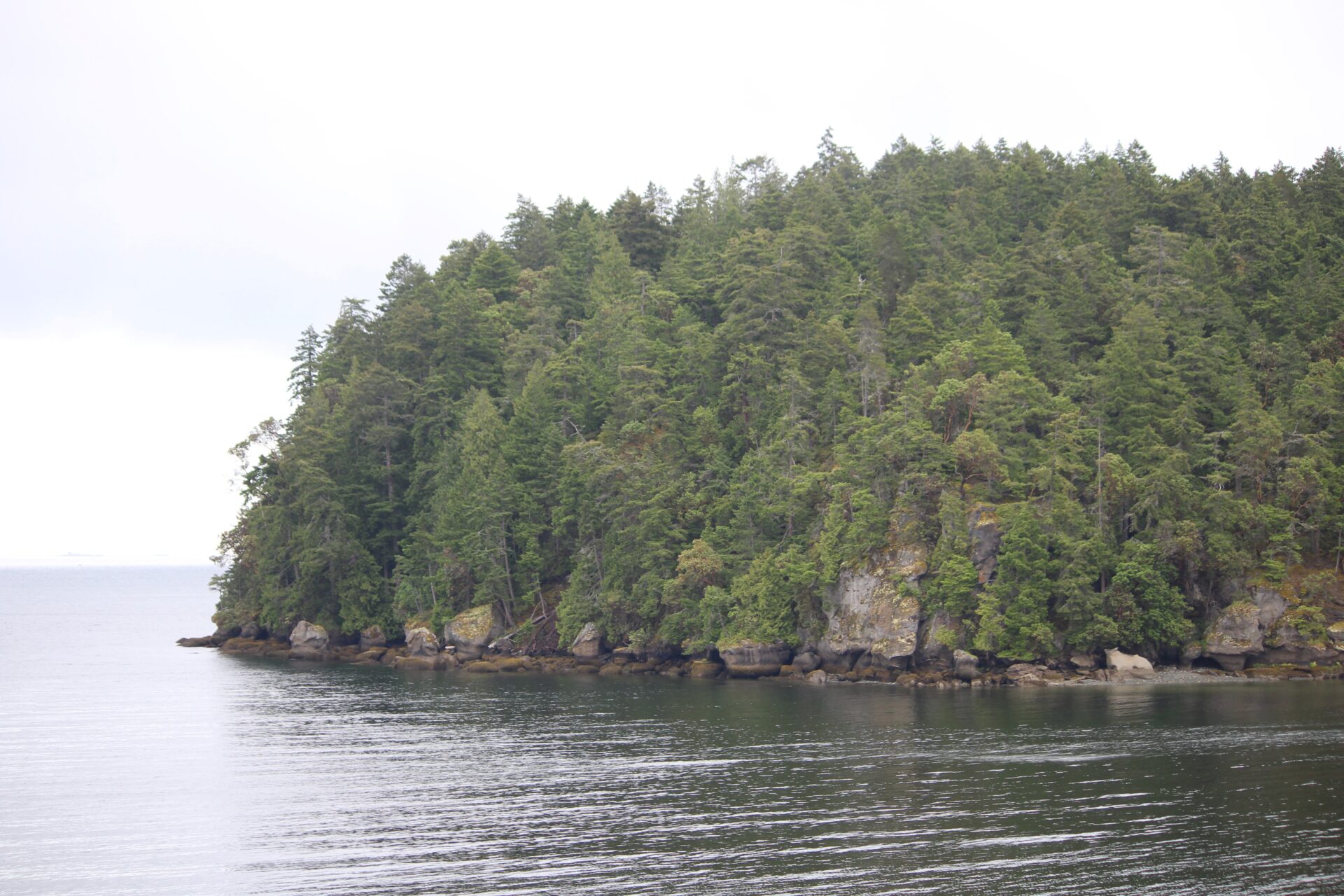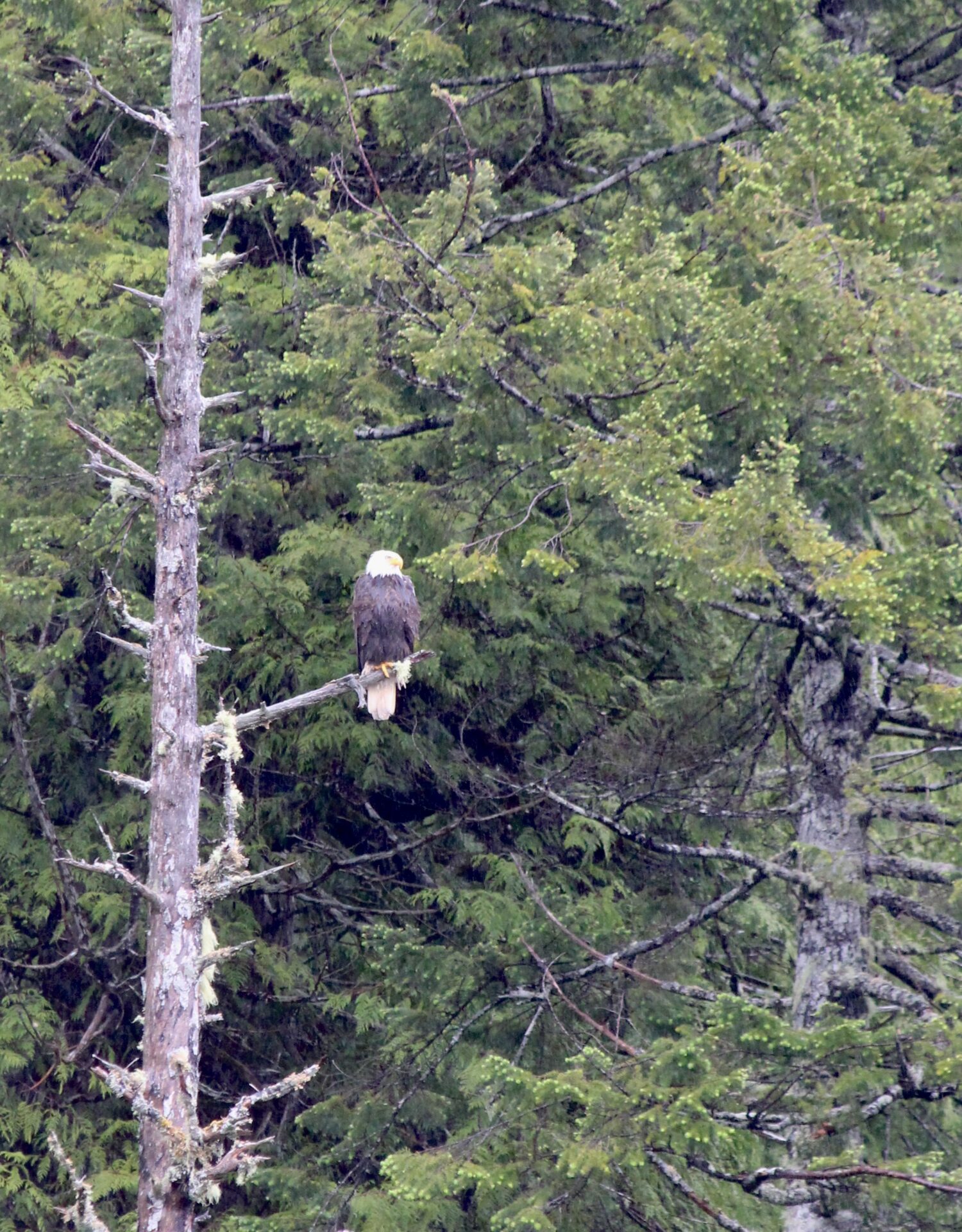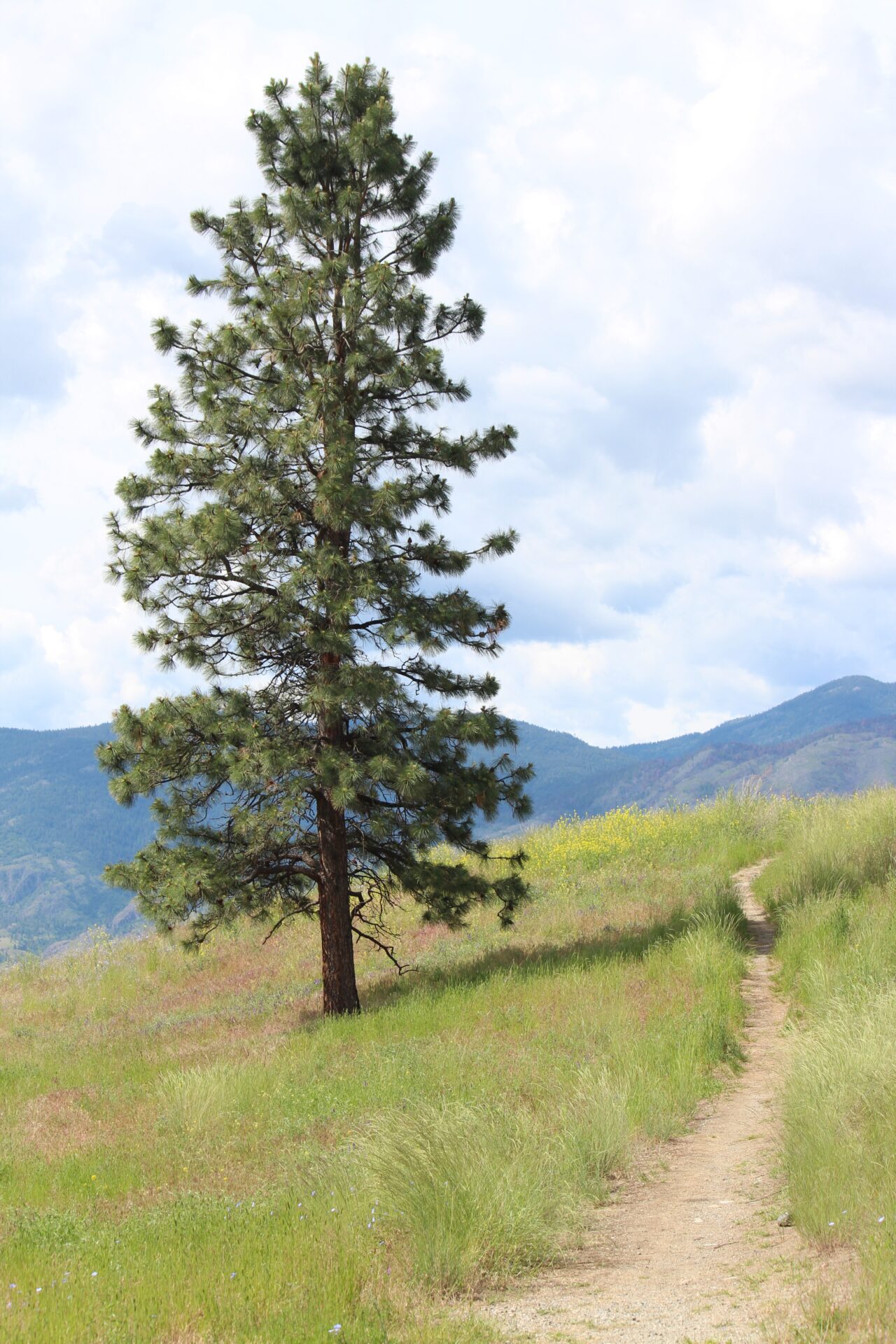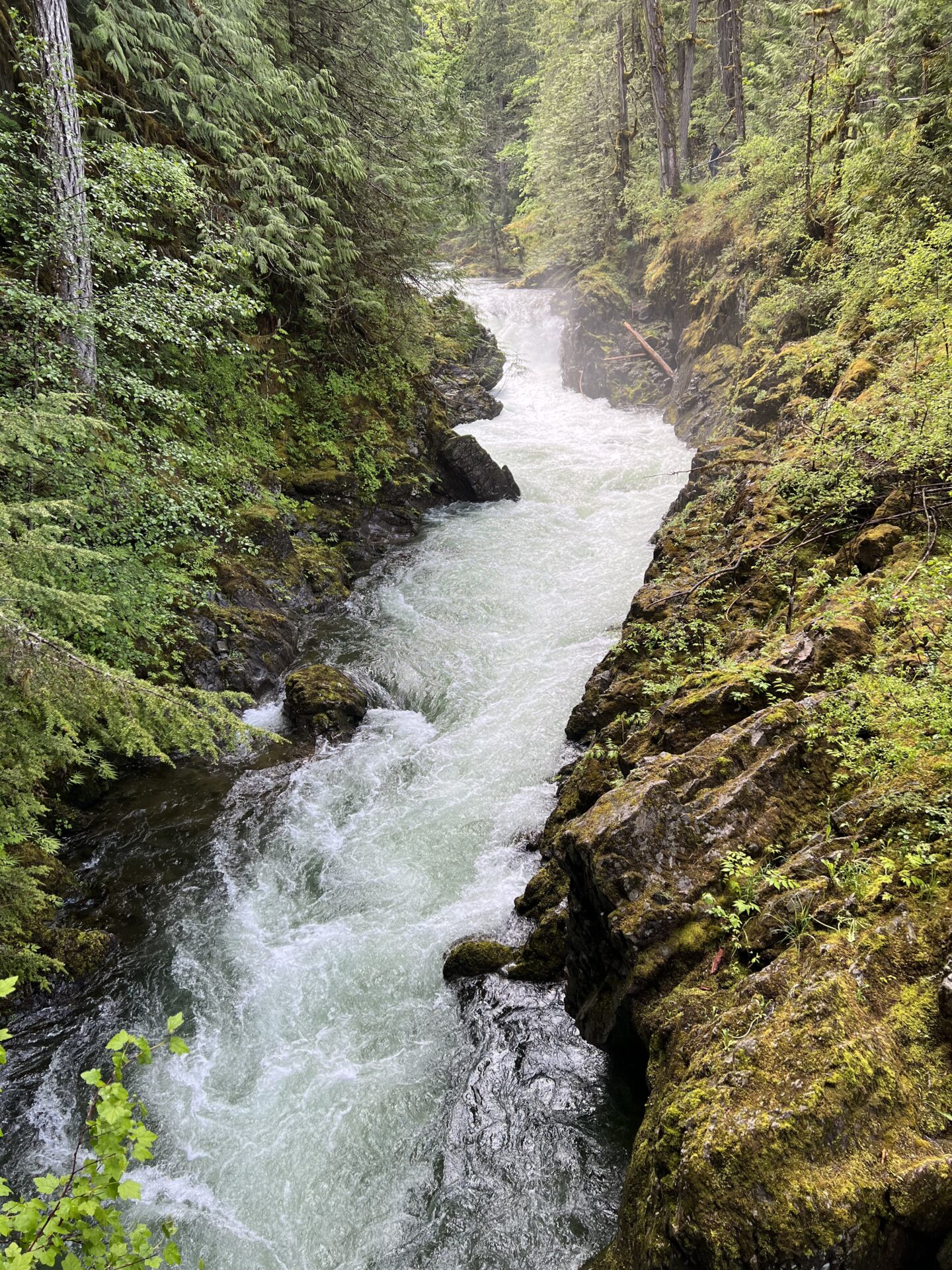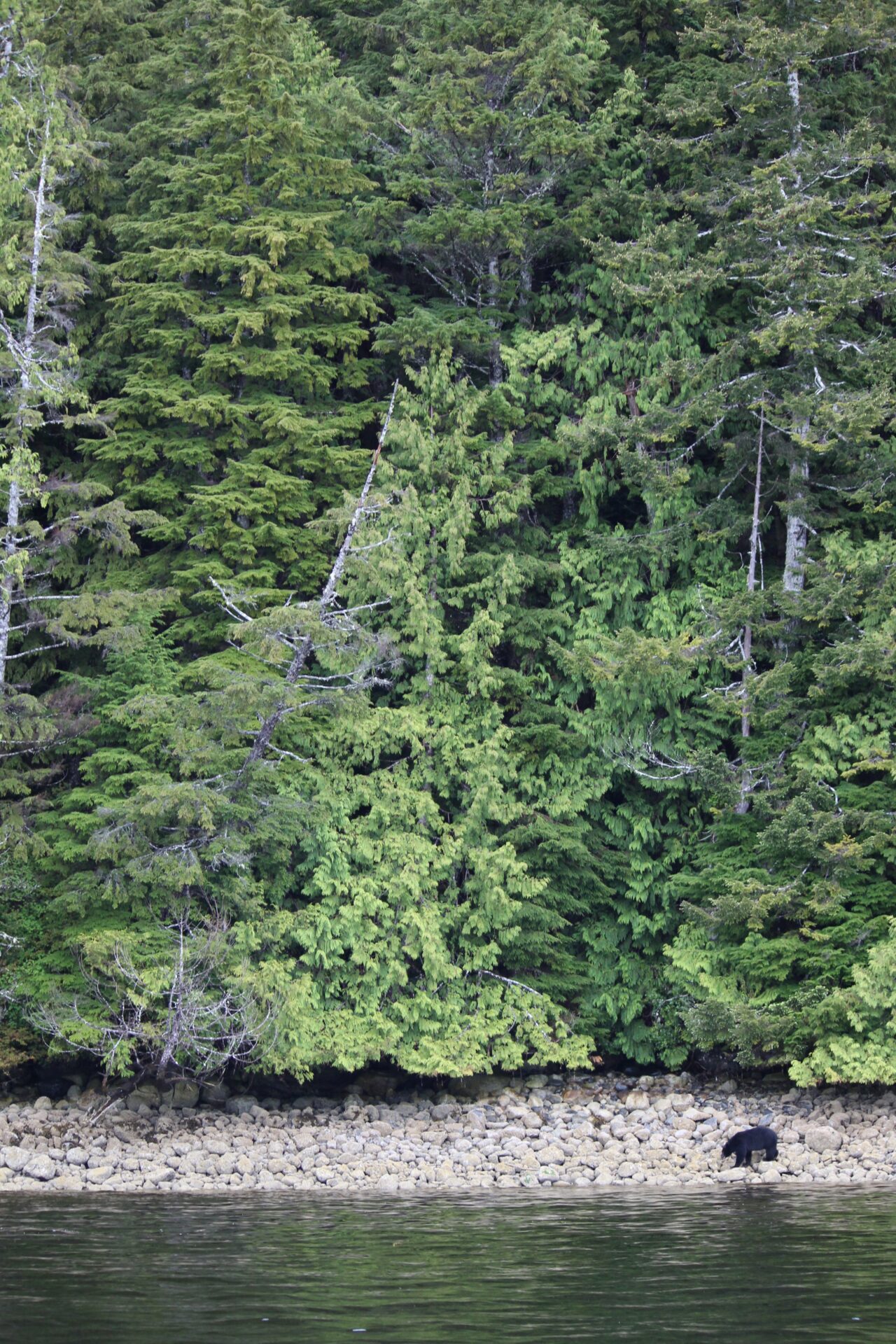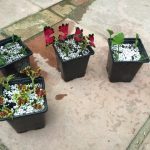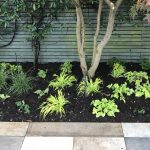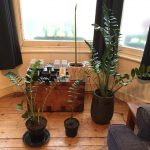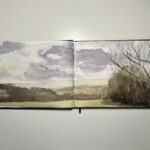Chris and I have just come back from a two week trip around the south west coast of British Columbia in Canada. That vast land, alive with complete ecosystems, has changed me. It was a long planned visit, delayed by two years because of covid, to attend the wedding of Chris’ youngest sister Lucy to her partner Jenny, who live out there. I’m pleased to say, they are now finally married! We began in Vancouver, took a ferry to Vancouver island’s old growth rainforests near Tofino, back up the coast to Whistler and then inland toward Penticton in the semi-arid Okanagan valley. Canada, you blow my mind.
Familiar plants
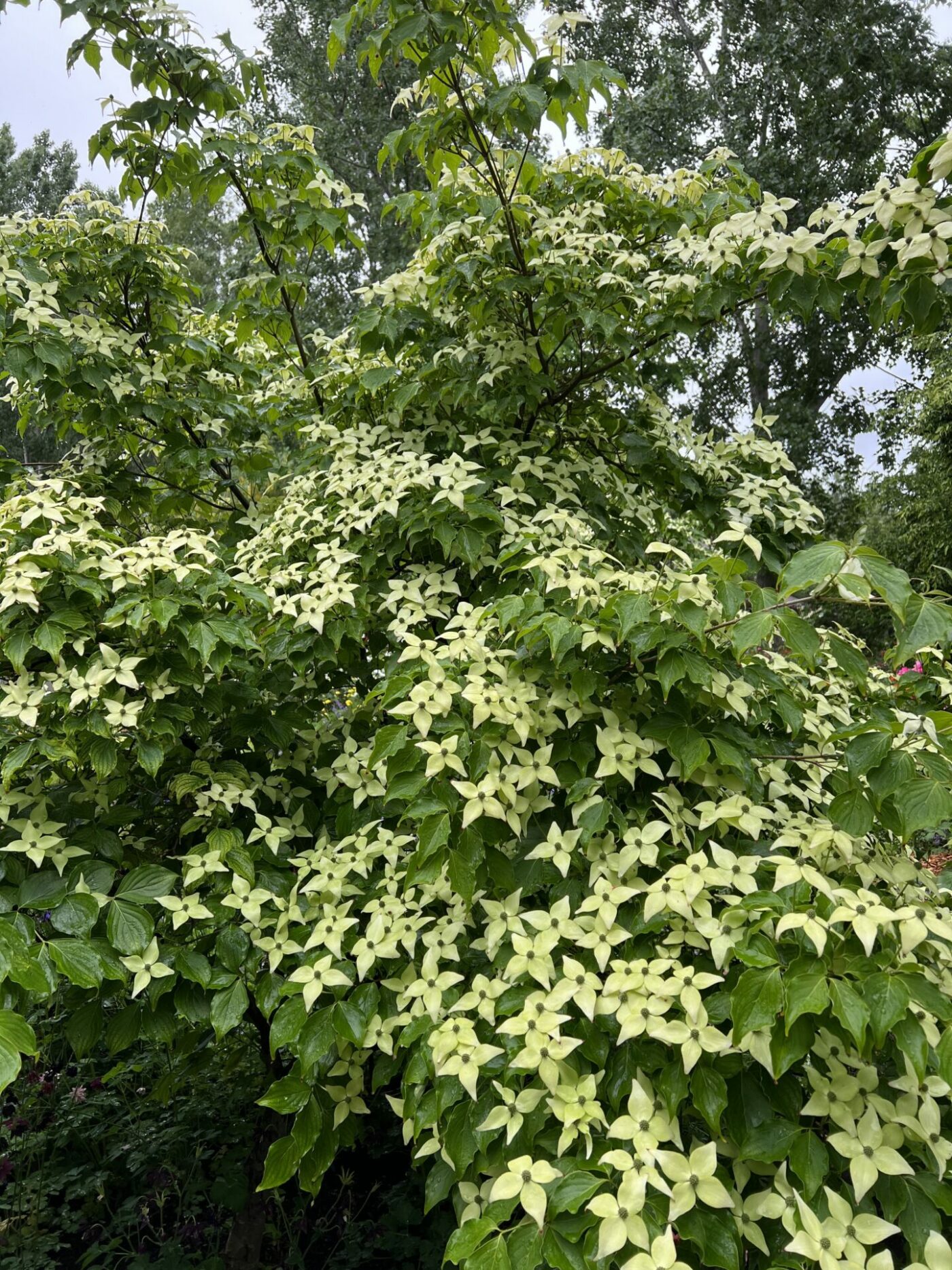
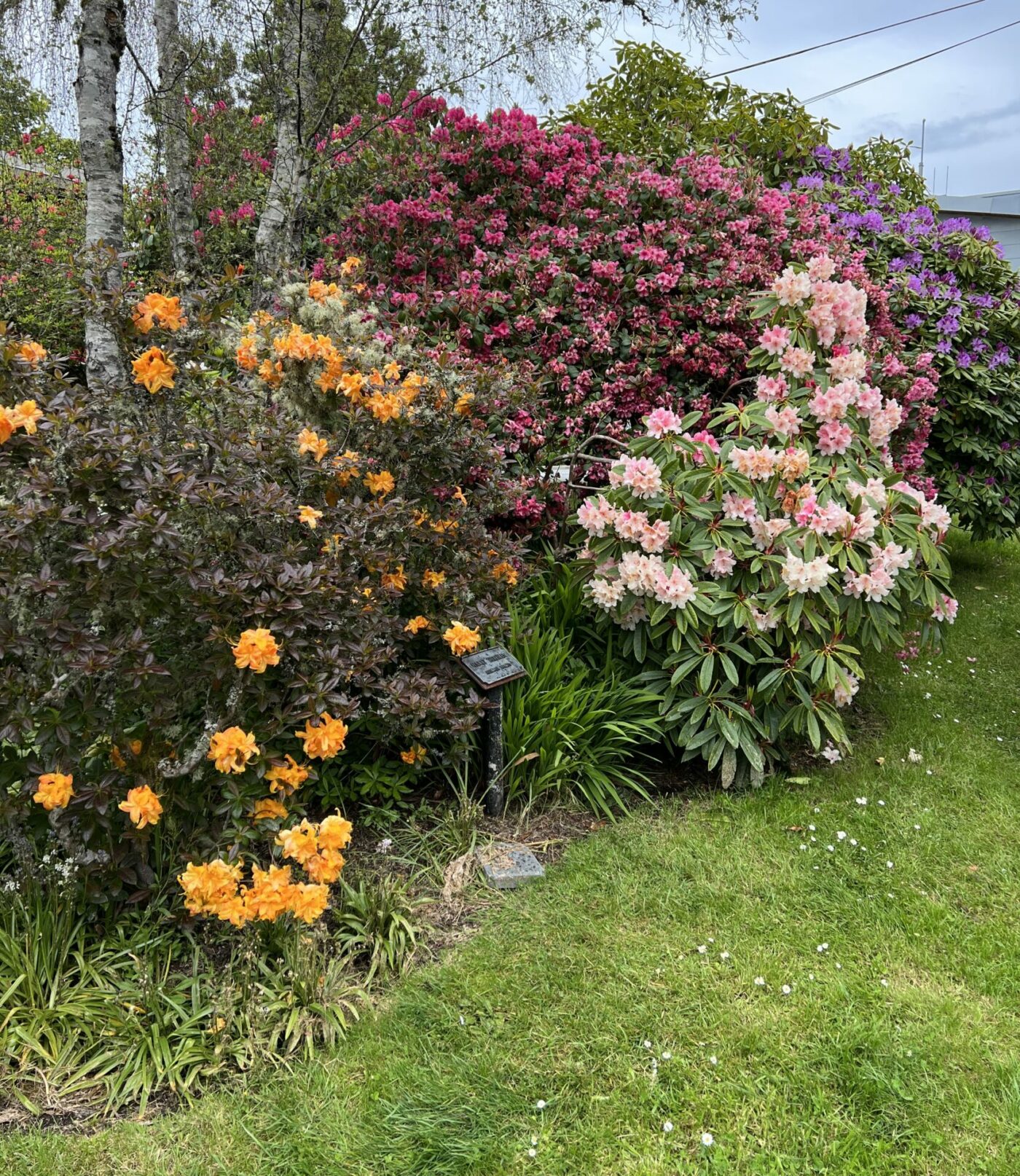
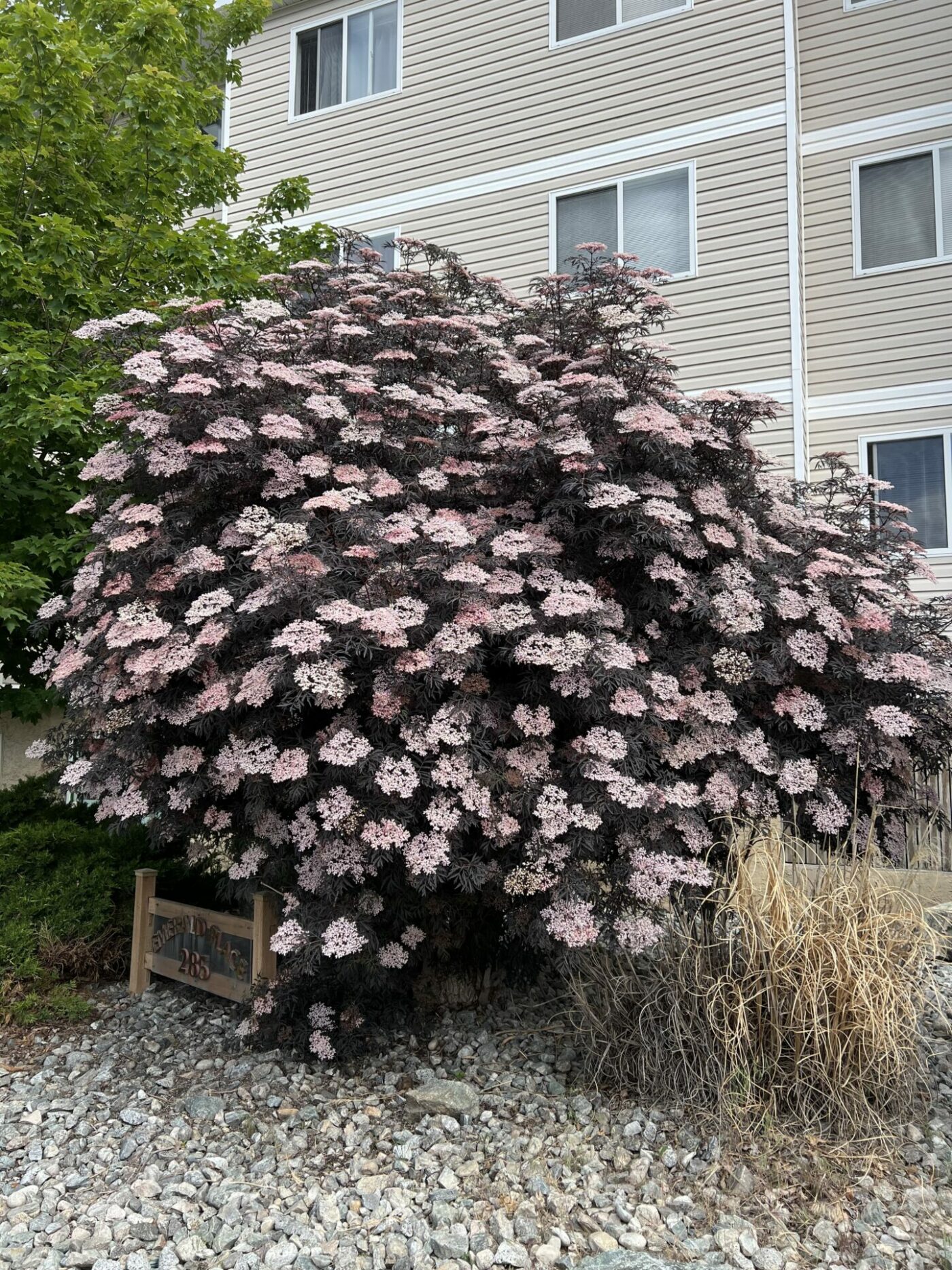
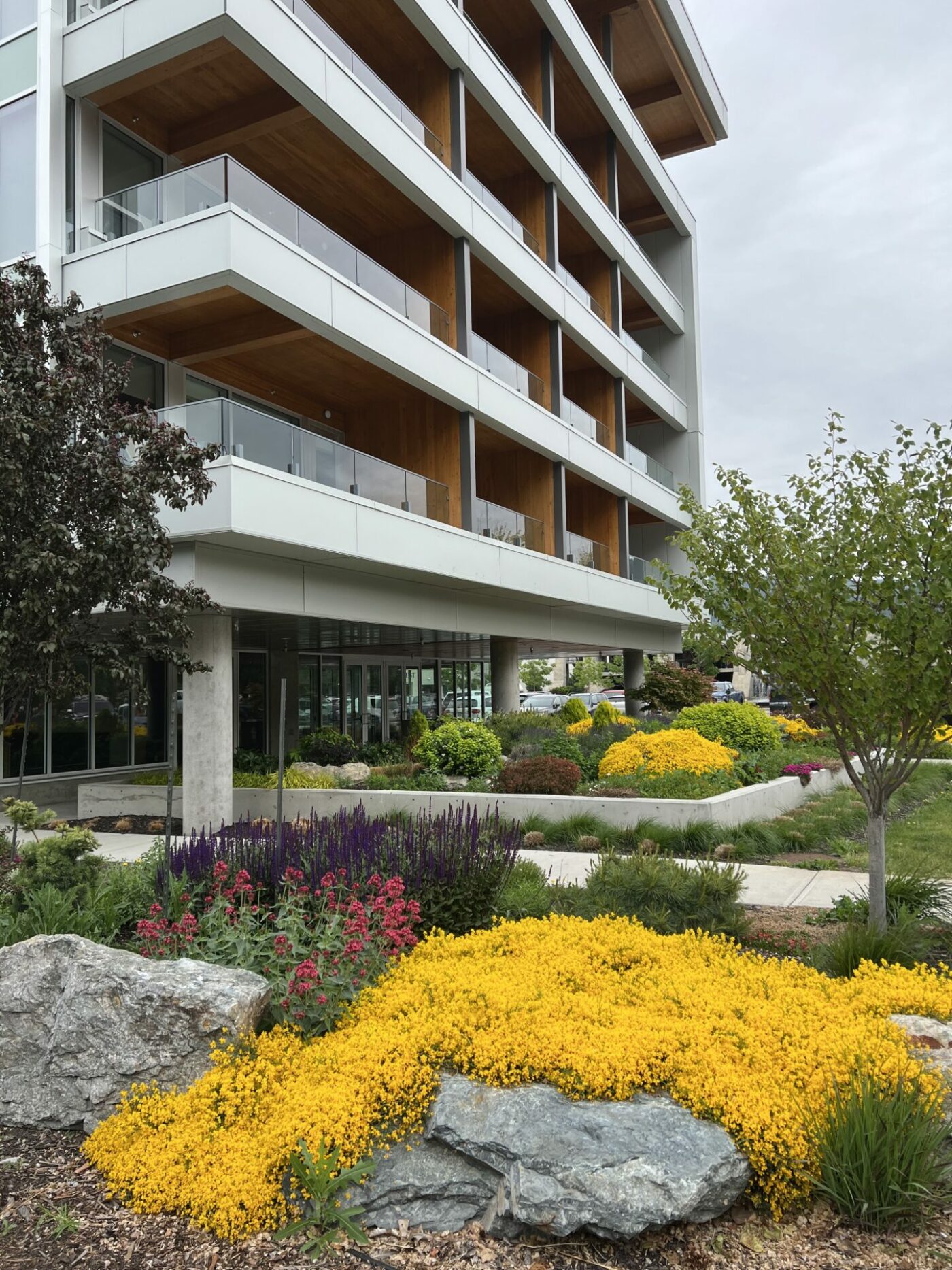
The first thing that struck me on arriving in Vancouver was that the vast majority of the garden plants, I’d say at least 95% of what I saw, were the same plants we grow in the UK. This all remained true for the rest of the trip. Cornus kousa, wisteria, irises, lupins, lilies, roses, rhododendrons, salvia, nepeta… you name it. Hostas, lots and lots of hostas! Hostas and lupins grow particularly well in Canada. Although the climate of the region we visited is very similar to the UK, reflected in the plants grown, it can have more extreme temperatures and conditions in the peak of winter and summer. Lupins, hostas and echinacea can struggle in parts of the UK because of slugs eating the fresh emerging shoots, this is usually in areas where winter doesn’t get cold enough for long enough. Slugs are kept at bay, allowing the plants to grow vigorously, in regions with colder winters and late springs, such as our hillside in West Yorkshire and colder parts of Canada.
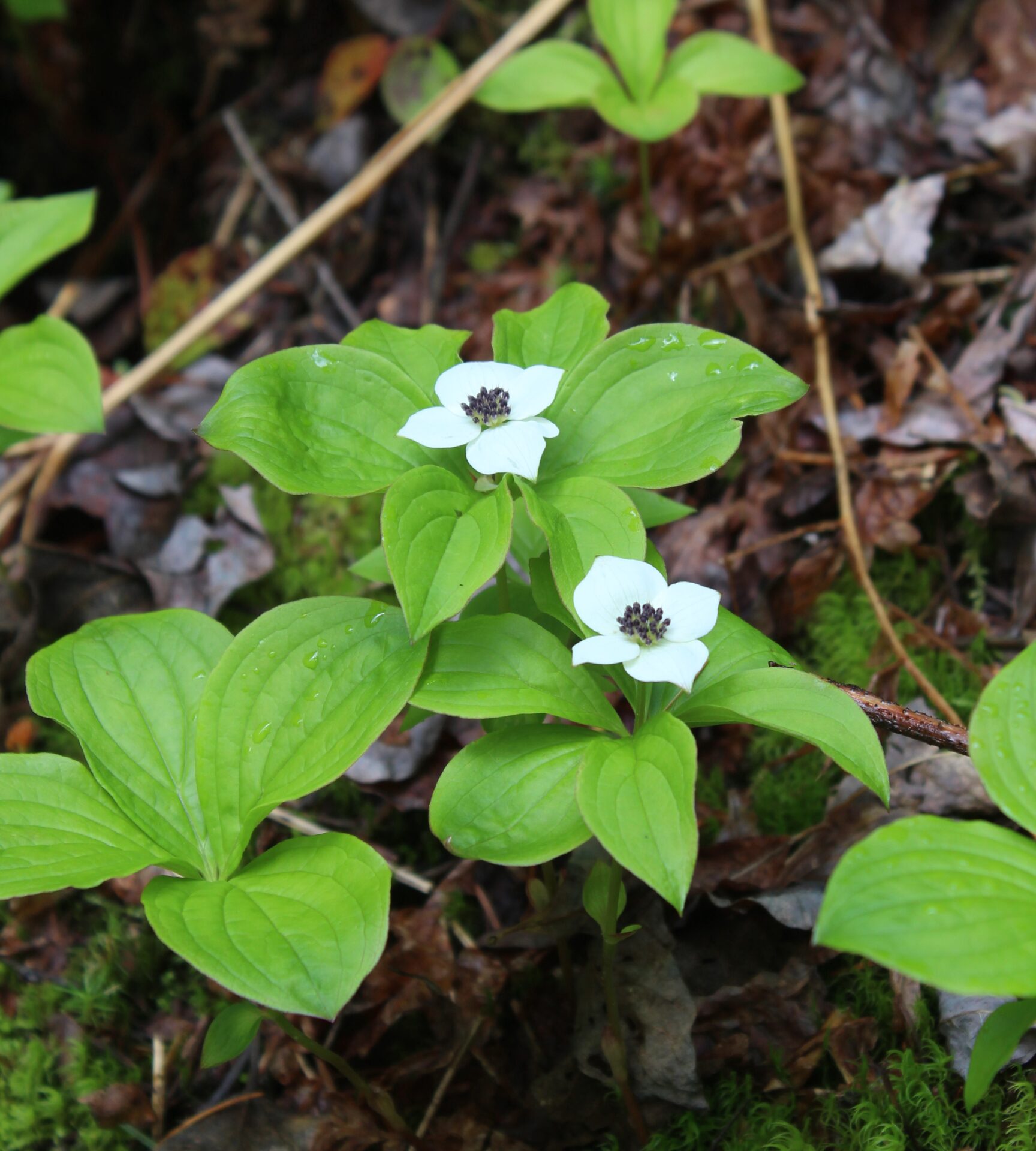
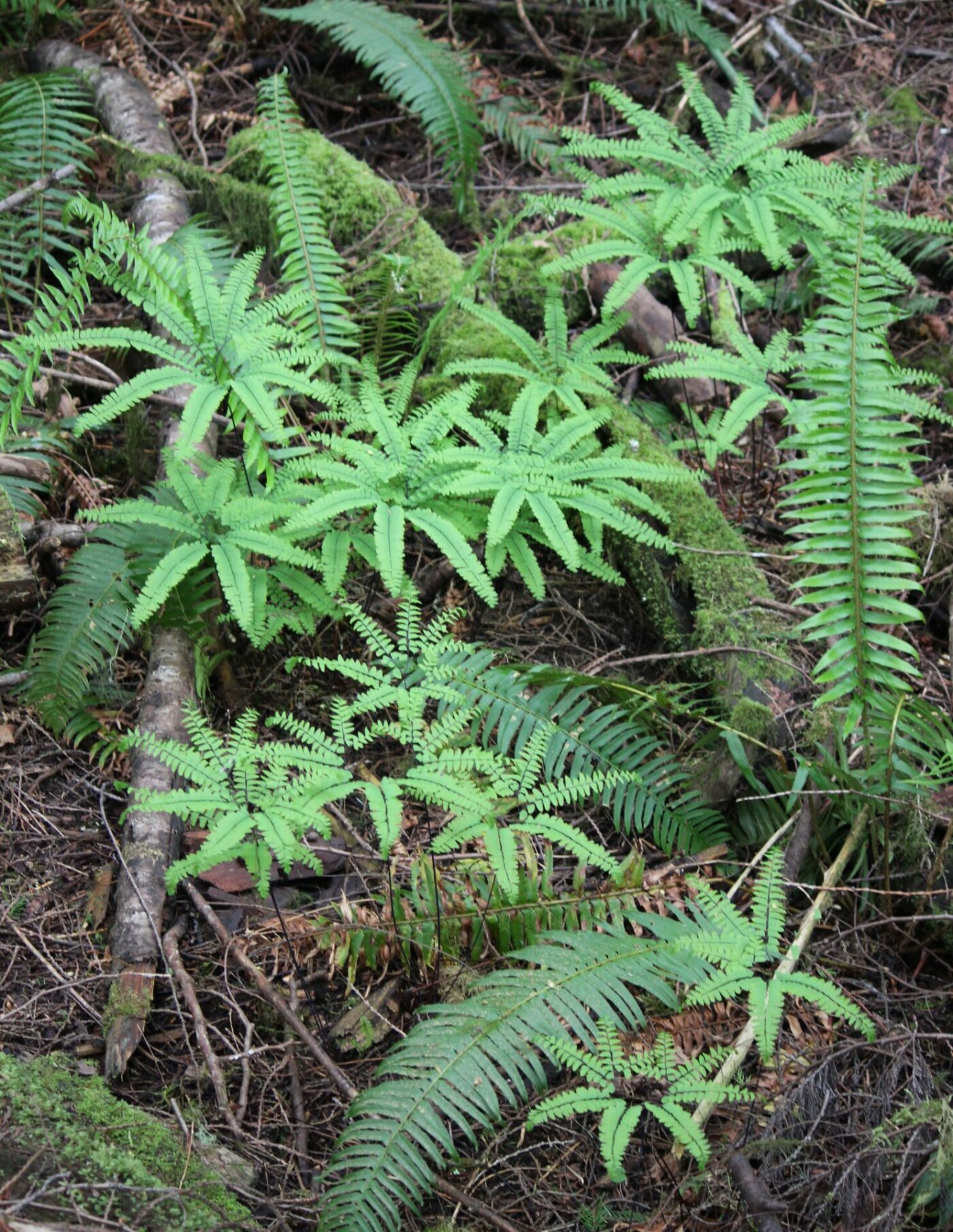
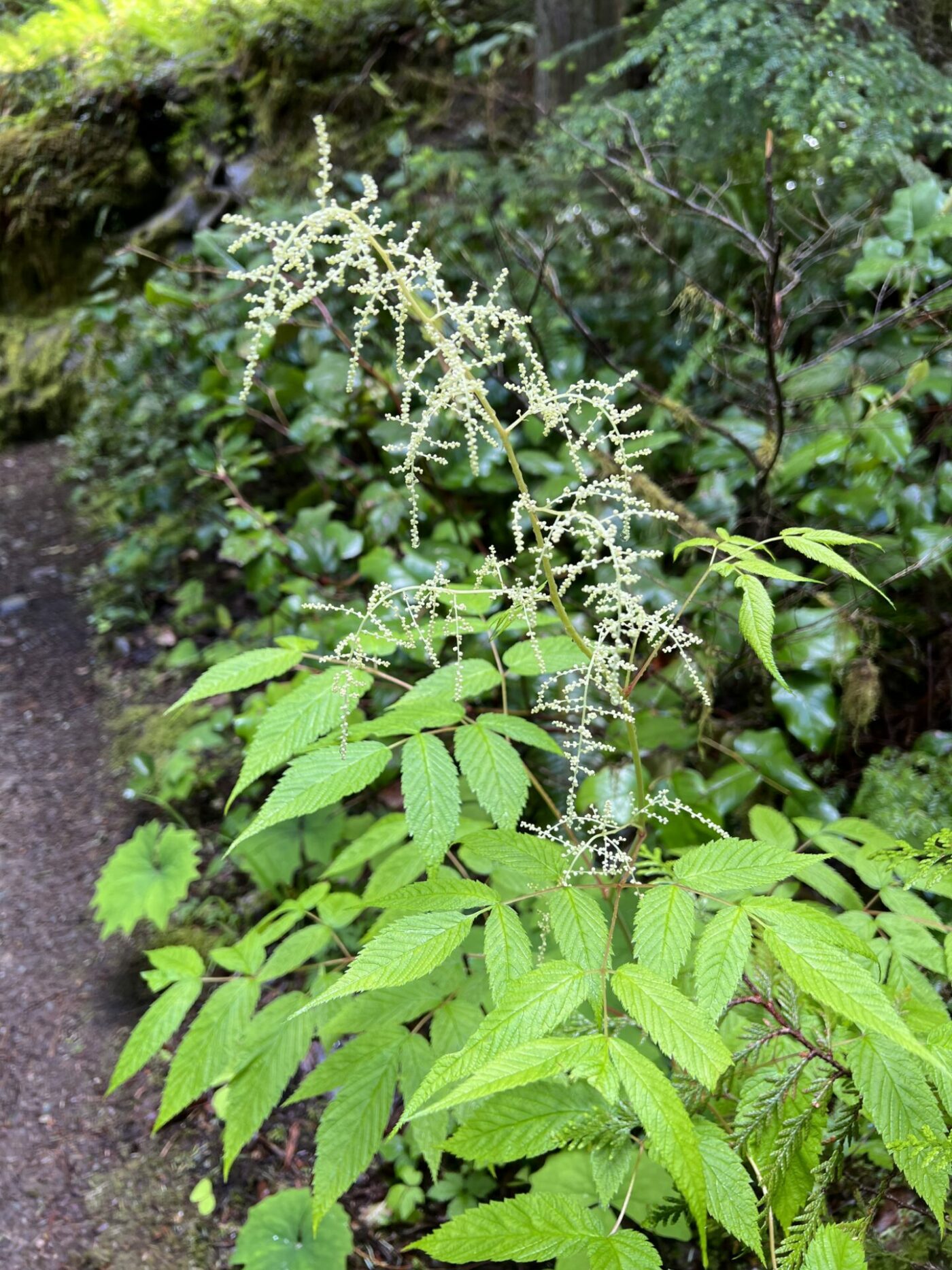
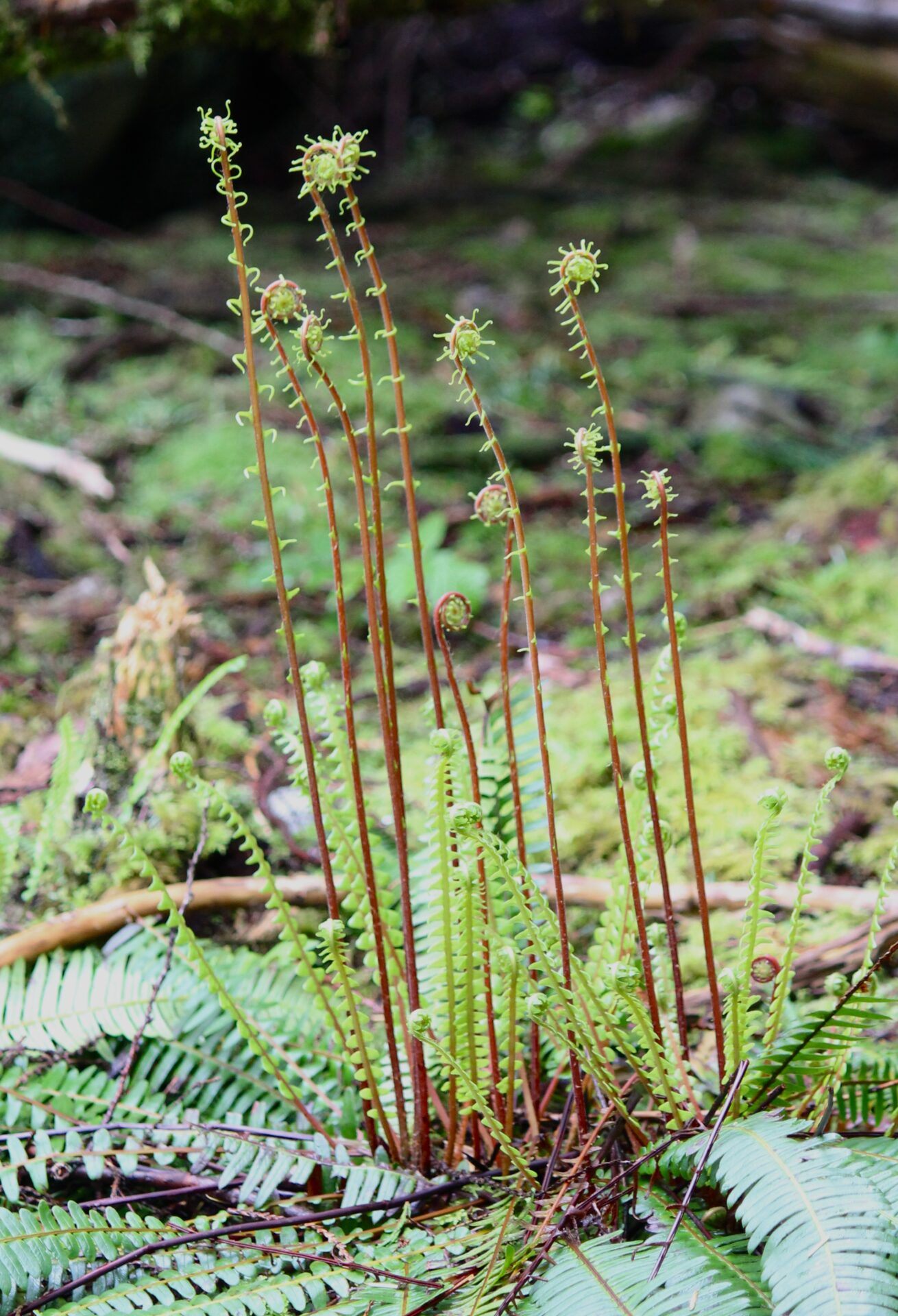
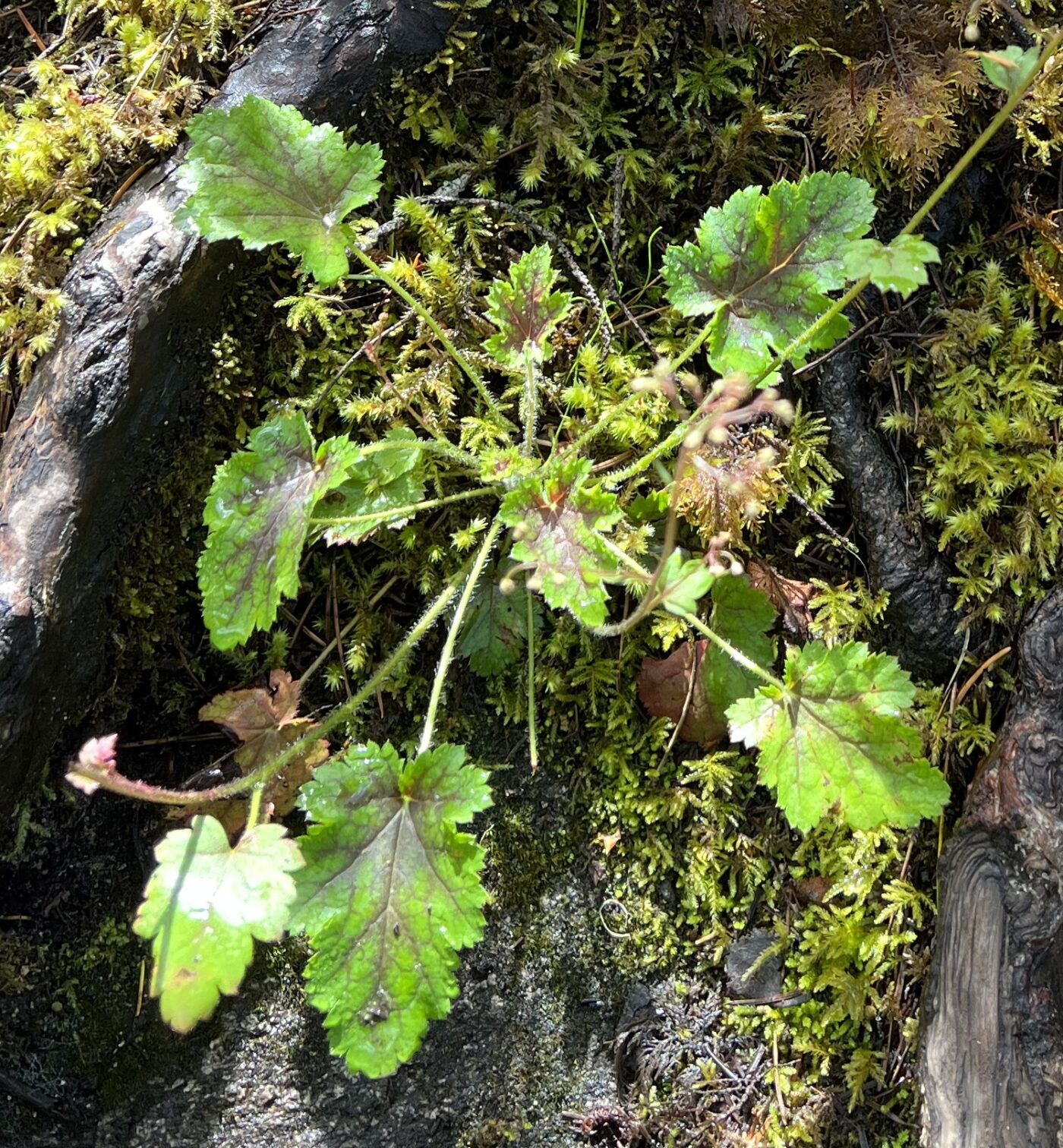
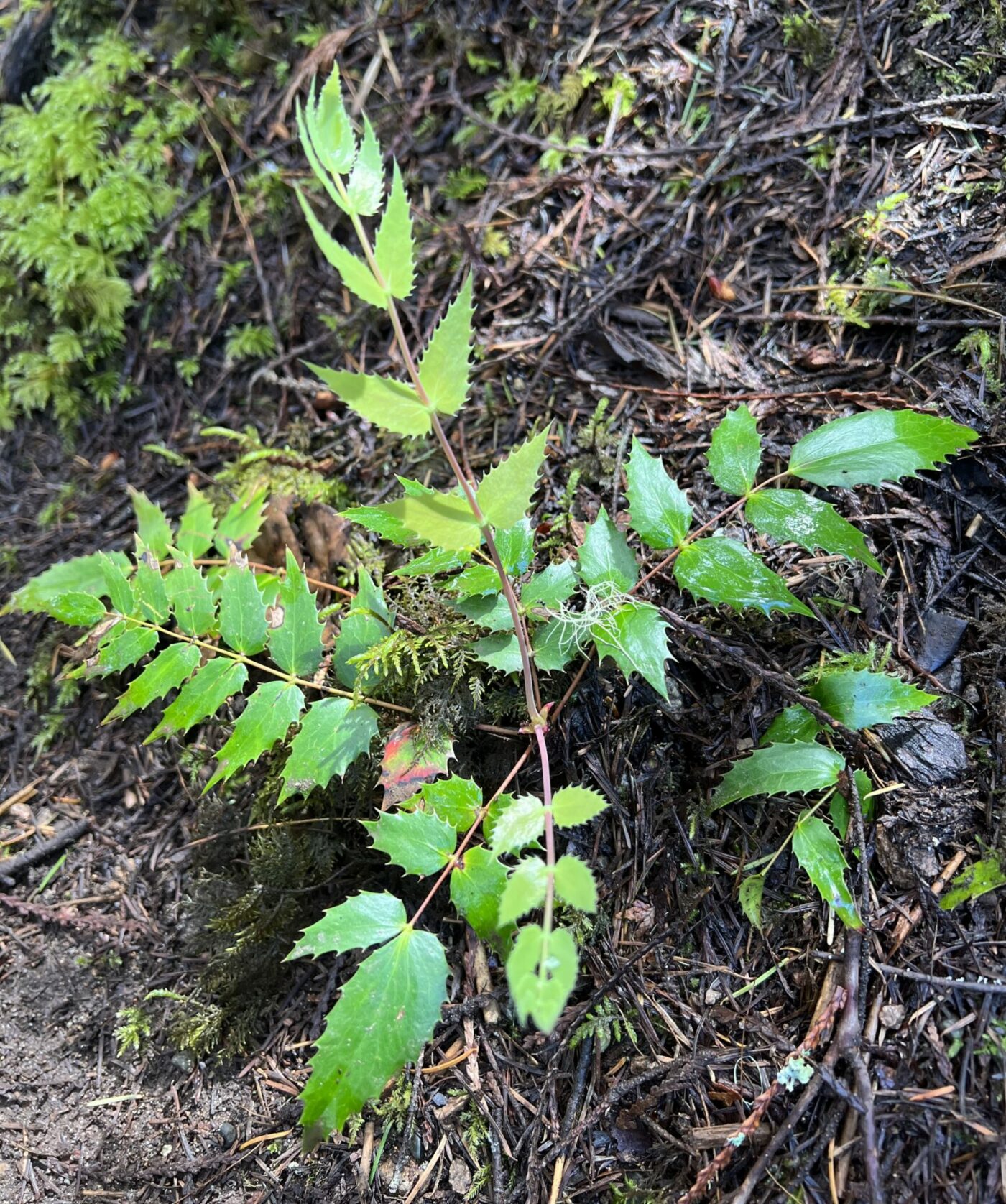
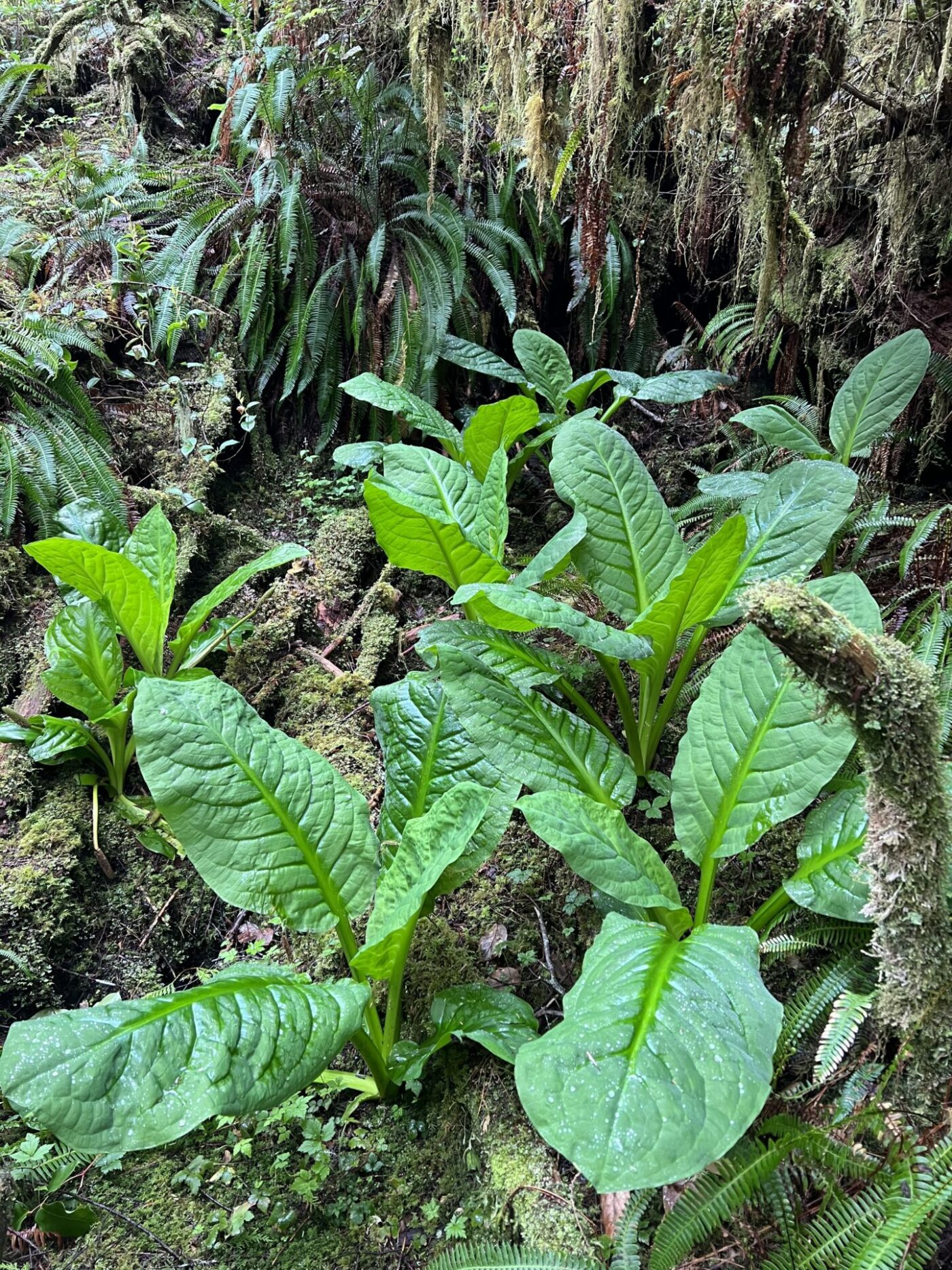
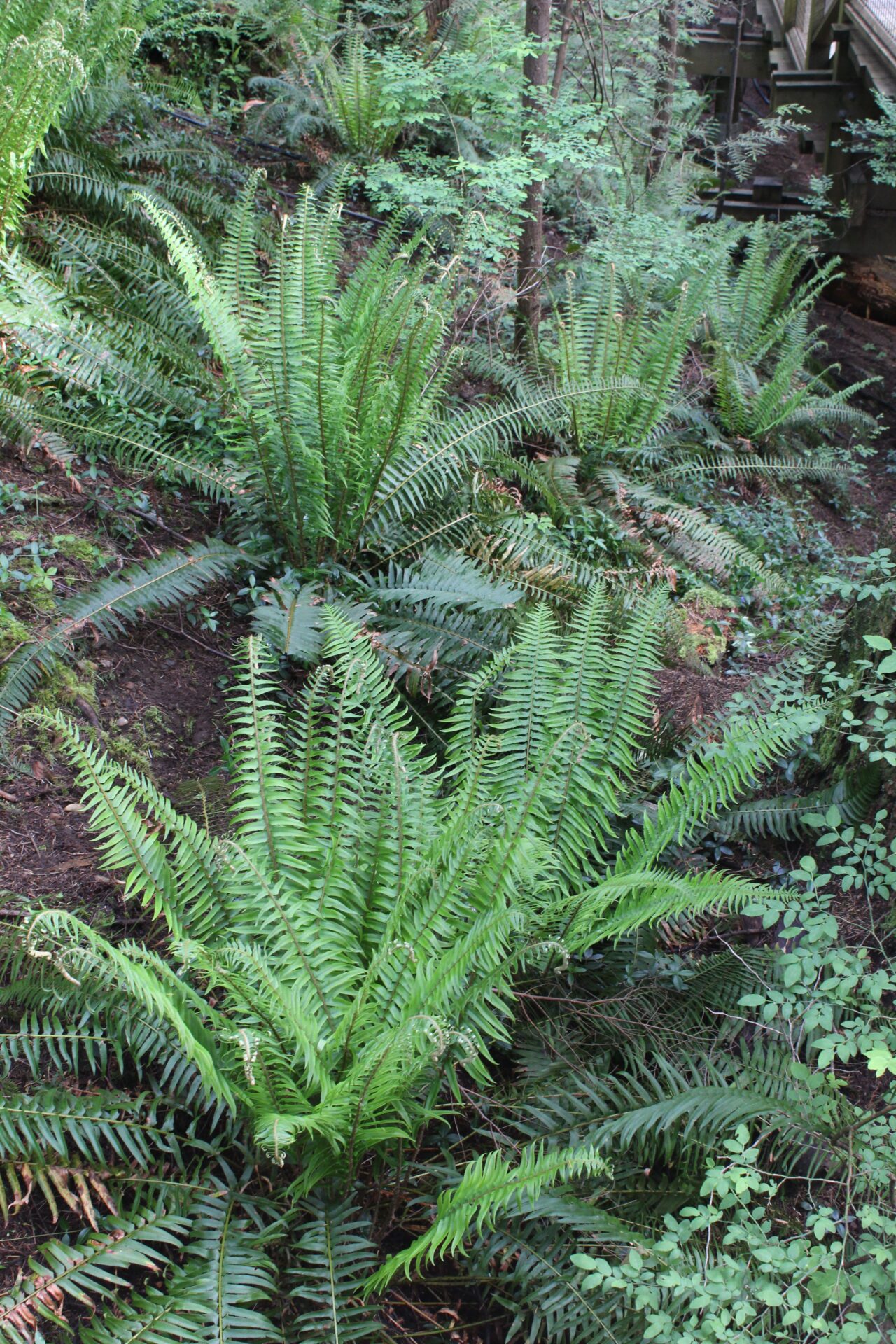
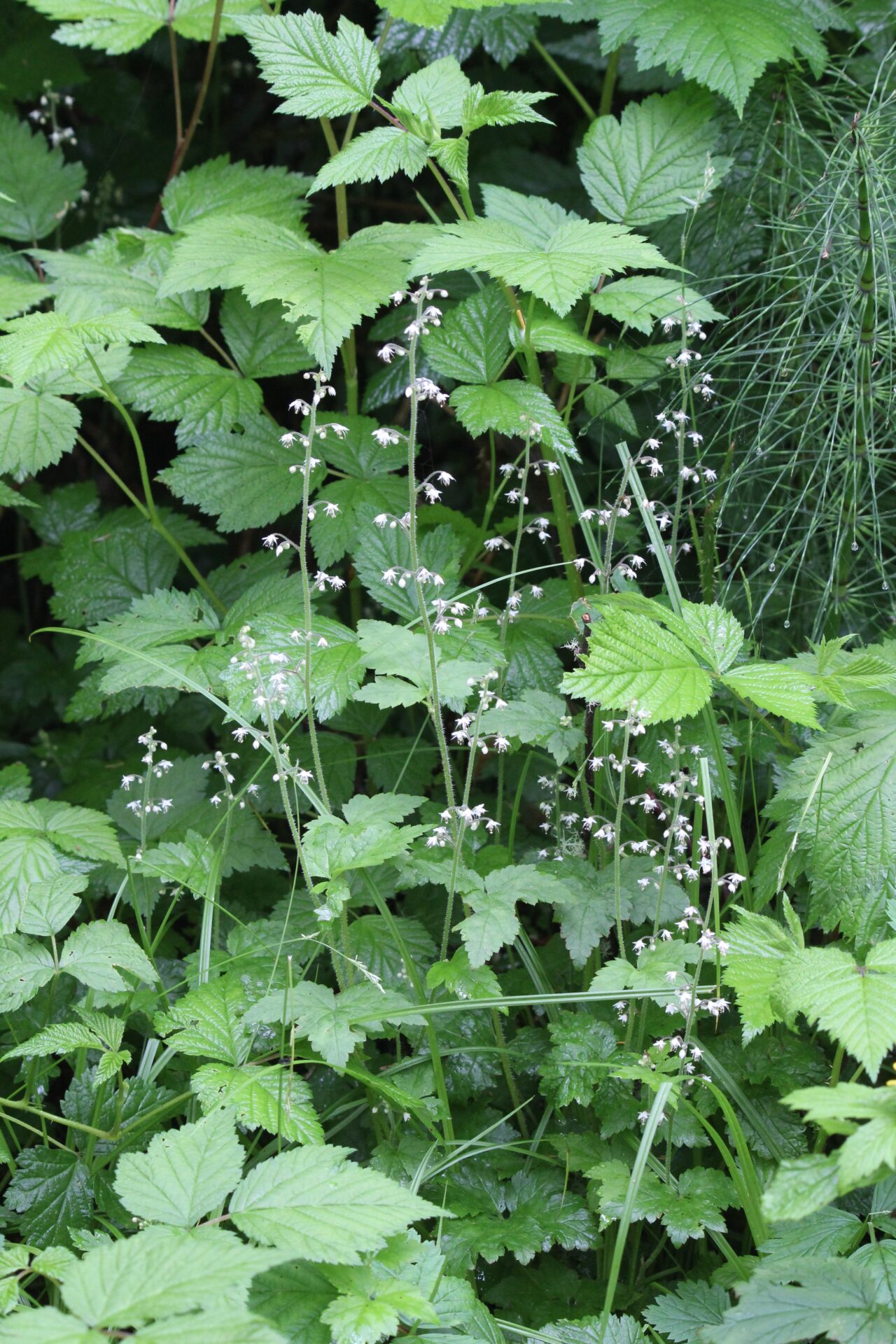
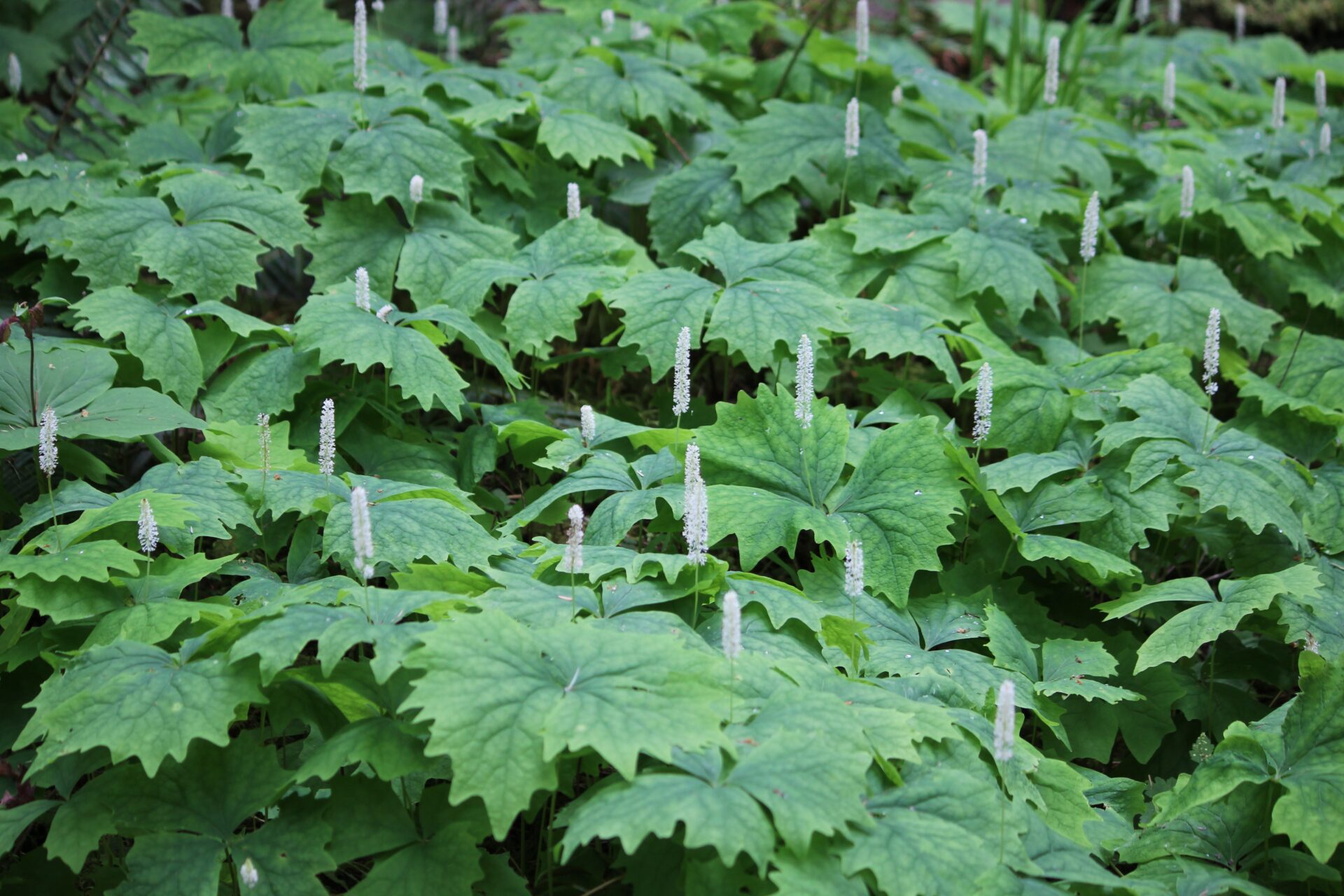
When we ventured into the wild, the theme continued as I saw even more plants we grow in UK gardens but this time in their natural wild habitat (above). I was awed to see Tellima, Tiarella, Mahonia, Trillium, many ferns and even skunk cabbage, a garden plant no longer allowed to be planted in the UK due to its disruptiveness in the wild. I found it very interesting that I didn’t see any of the Canadian wild plants in the gardens around Canada, even though we grow them everywhere in the UK. I can’t think of a single instance of them growing in Canadian gardens that I saw. Perhaps as in the UK, because we become blind to the familiar, or simply we have something within us drawn to the new. You’ll notice in the above two collections of images the distinct difference in colourful ornamental planting, and the lush green foliage of the wild forest plants.
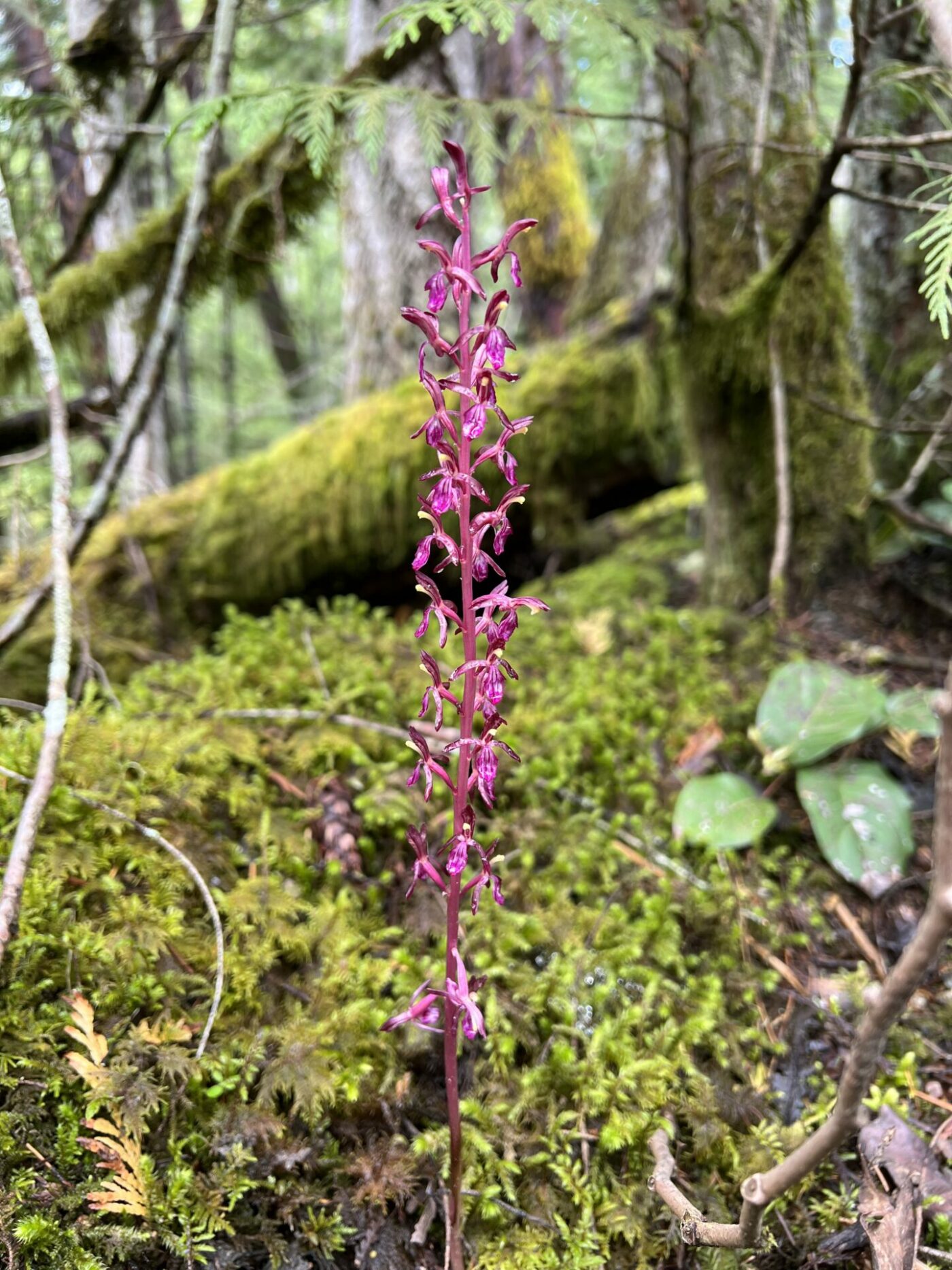
Wilder lives
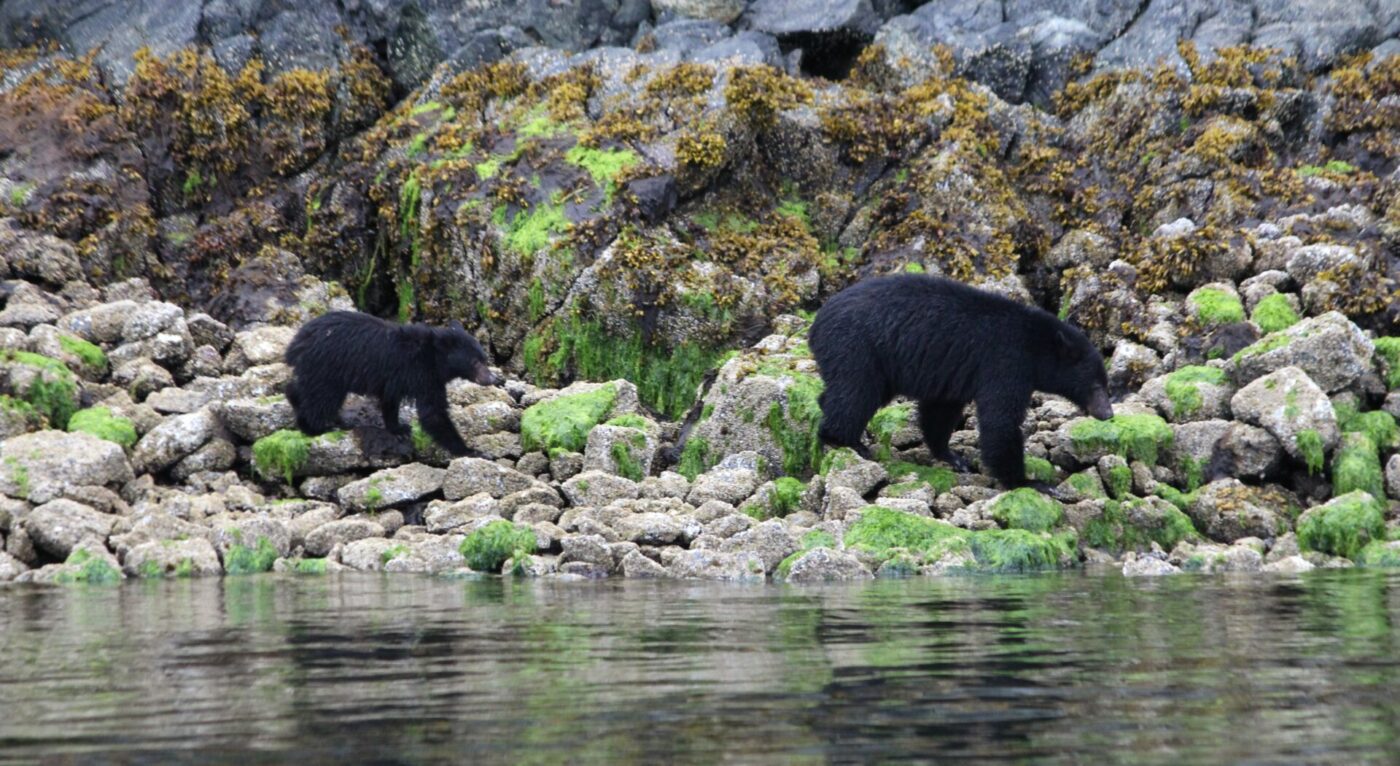
British Columbia, the region we visited, has protected complete ecosystems that still include many bears, herbivores including large deer, goats and moose, alongside larger predators to keep them under control, such as wolves, coyote, eagles, lynx and cougars. It was eye opening to me how happily people live alongside these animals, respecting their place in the country and learning how to stay out of their way for our safety and to not disturb them. Bins are all covered with anti-bear lids and people are encouraged not to leave rubbish out. You may be surprised to hear that there are hardly ever any bear attacks on people – you are 60,000 times more likely to be killed by a person than a bear in Canada according to Bear Wise. When I mentioned to a hiker that the UK once had bears, lynx, wolves and other animals but they are now extinct, the response was a genuine “how sad” for our loss.
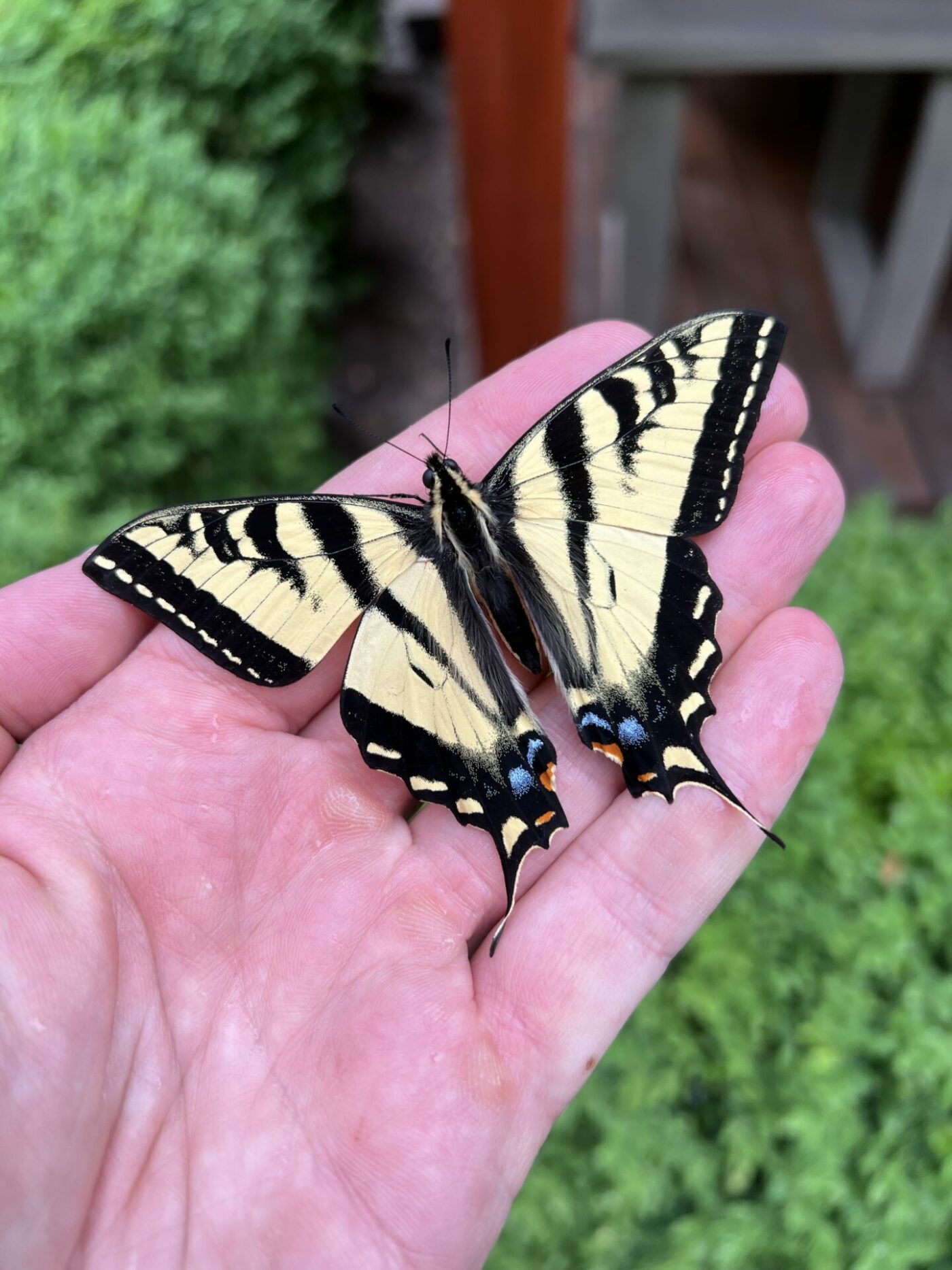
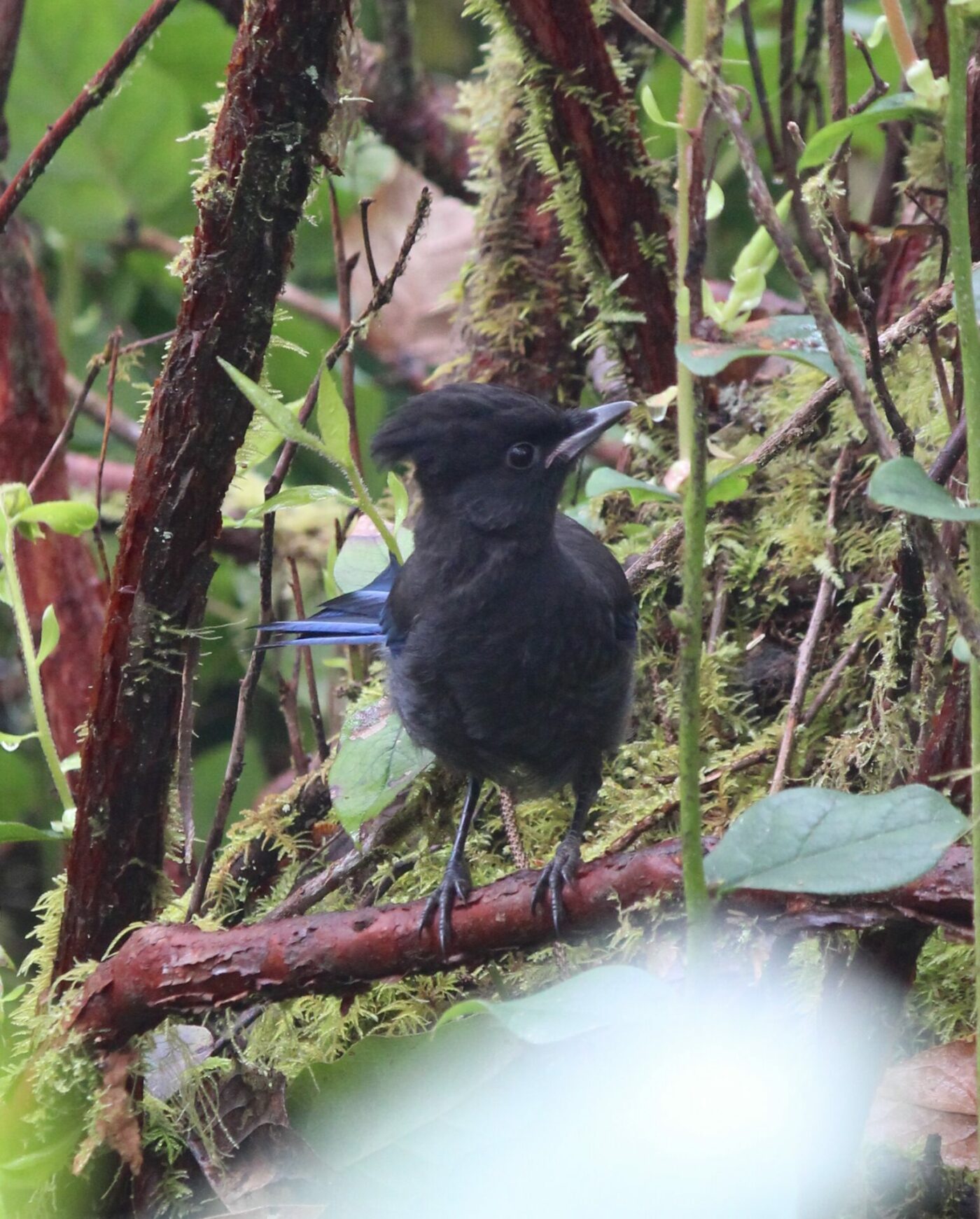
It struck me, being in a place where deer walk unwaveringly along roadsides and bald eagles carry snakes past restaurant diners, how ridiculous it is that we shy away at the suggestion of reintroducing the European lynx, wolves and bears to our shores. That beaver reintroductions are controversial in the UK, is ludicrous. One day of visiting British Columbia’s natural areas and it was clear that the UK barely has any true natural areas at all. What we think of in the UK as wild is in fact, farmland. Where Canada’s national parks are for nature to live and continue evolving, in the UK the national parks are mainly fields of crops, sheep and cows with buildings between them.
Old growth
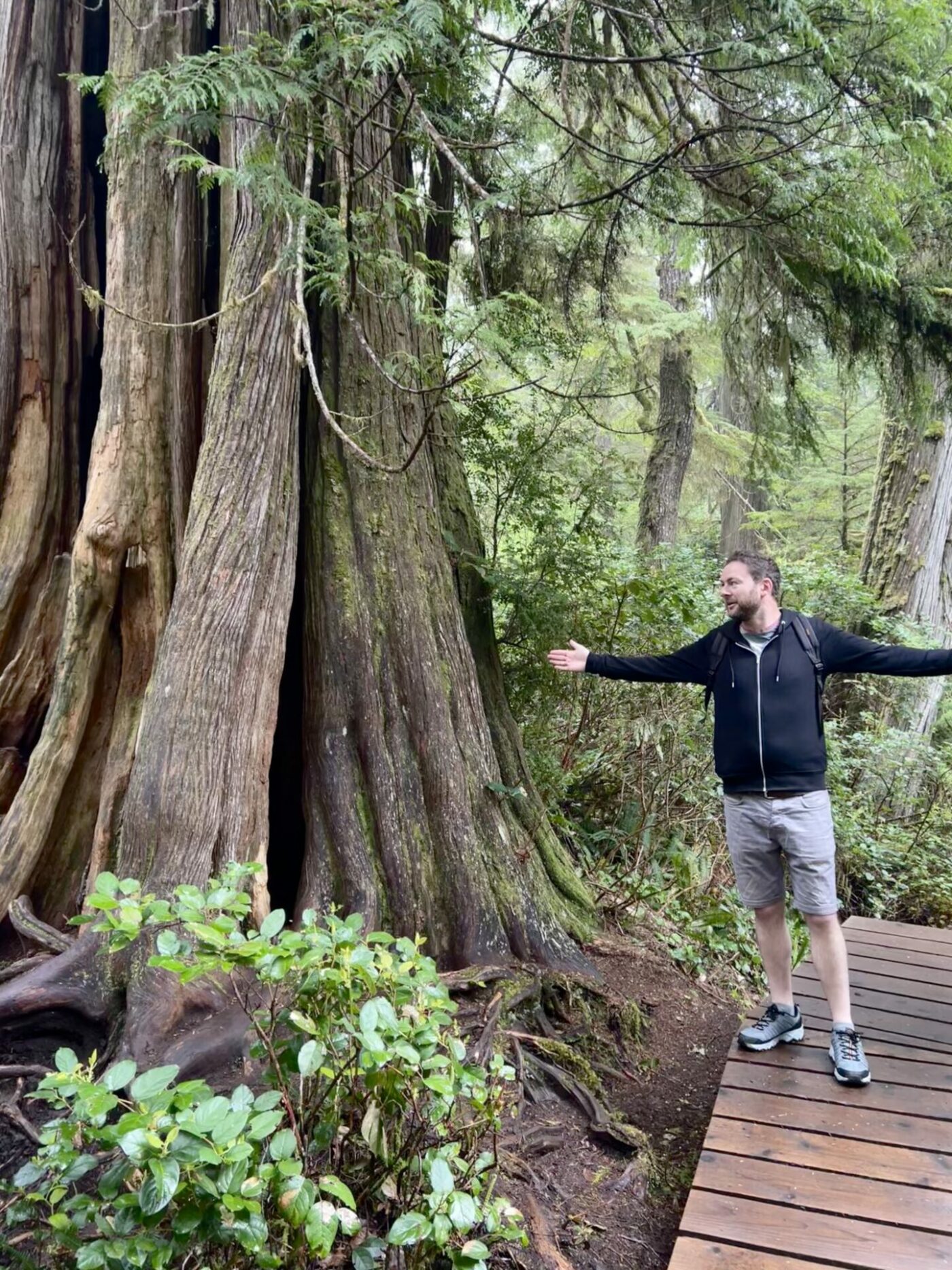
I will never forget walking through the old growth temperate rainforests of the Pacific Rim national park near Tofino on Vancouver Island, a large island reached by a 90 minute ferry ride. Old growth means a forest that has never been felled or cleared, such ecosystems are as close to untouched nature as you can get, and very rare these days. Some of the conifer trees in this forest, which consist of Western Red Cedar (Thuja plicata) and Western Hemlock (Tsuga heterophylla), are over 800 years old, huge in girth and height. As one sign pointed out, they were saplings before any white person had set foot in the area.
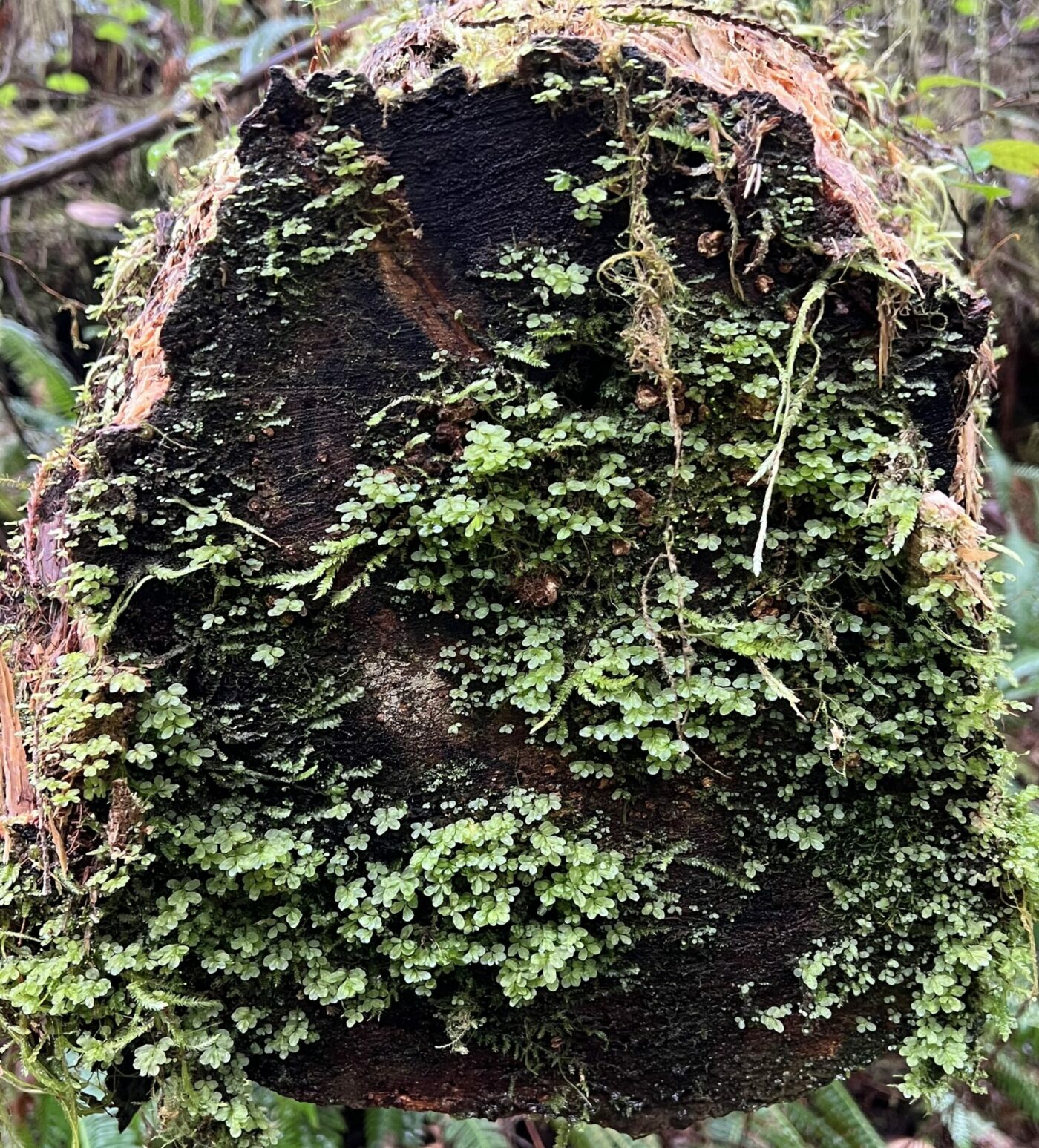
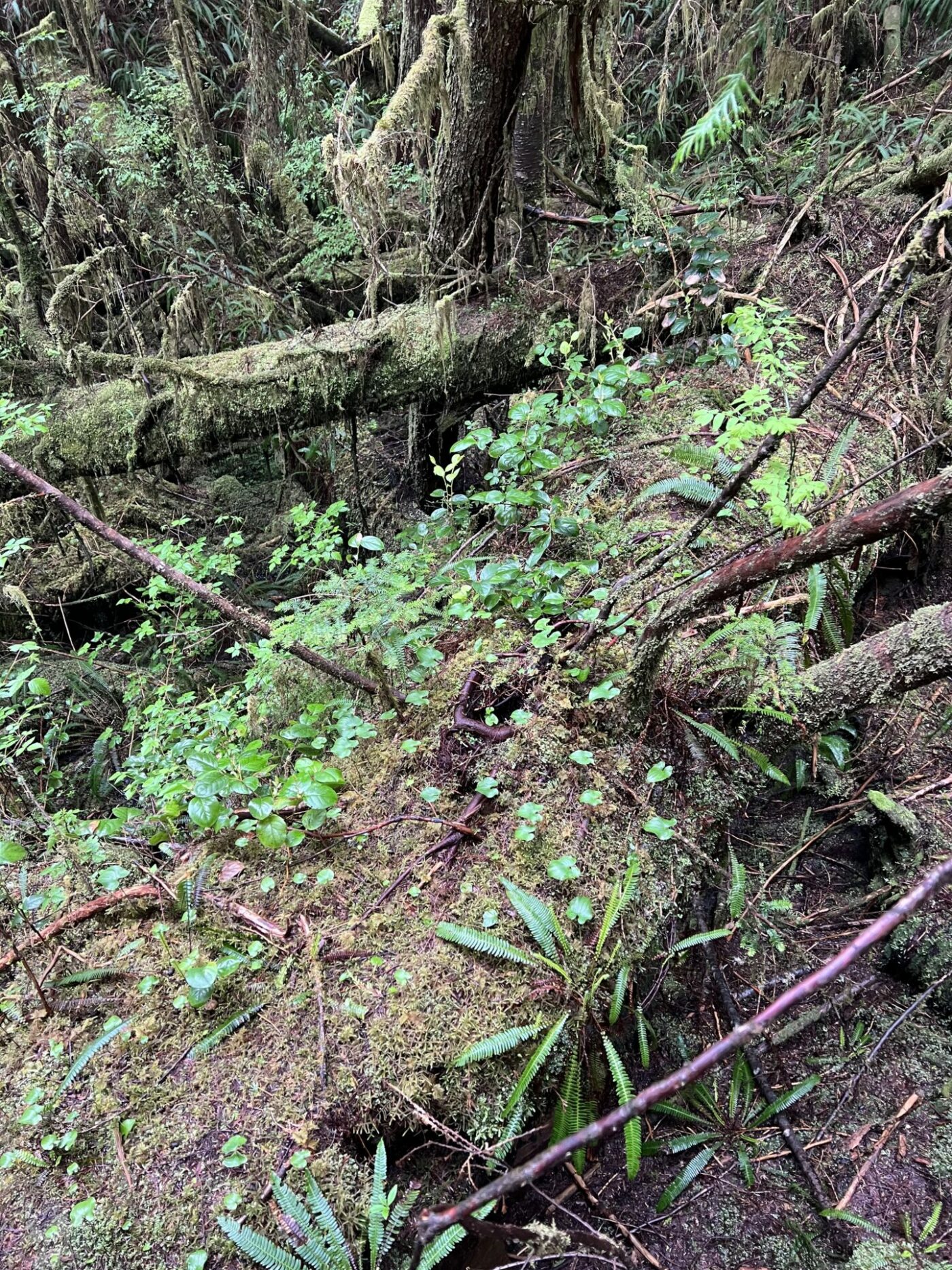
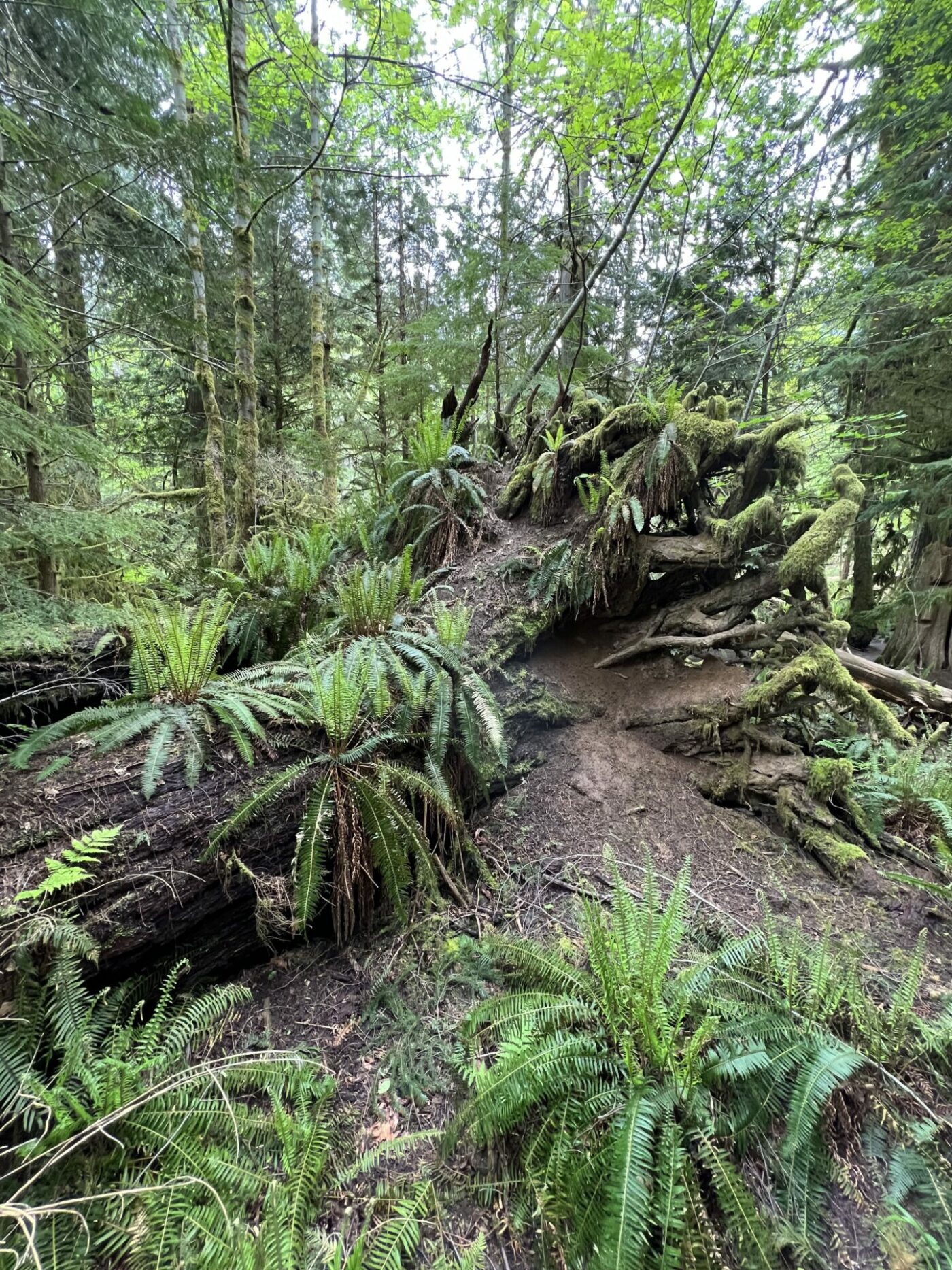
More life lives in the canopy of rainforest than at ground level and it’s considered one of the greatest biomass creating regions of the world. Humid and thick with mosses, ferns, lichens. The prehistoric echoes of birds and evidence of insects and animals in the holes and bites in bark and leaves. Old growth is something we see little of in the nature stripped UK. Ancient trees in the senescence of their time and in their death drip and swell with life as fungi, insects, Hemlock trees, and other lifeforms begin to use their decaying and dead wood. This is called climax ecosystem, allowed to reach its full potential with trees at the very end of their life, to fuel new life in the completion of the cycle.
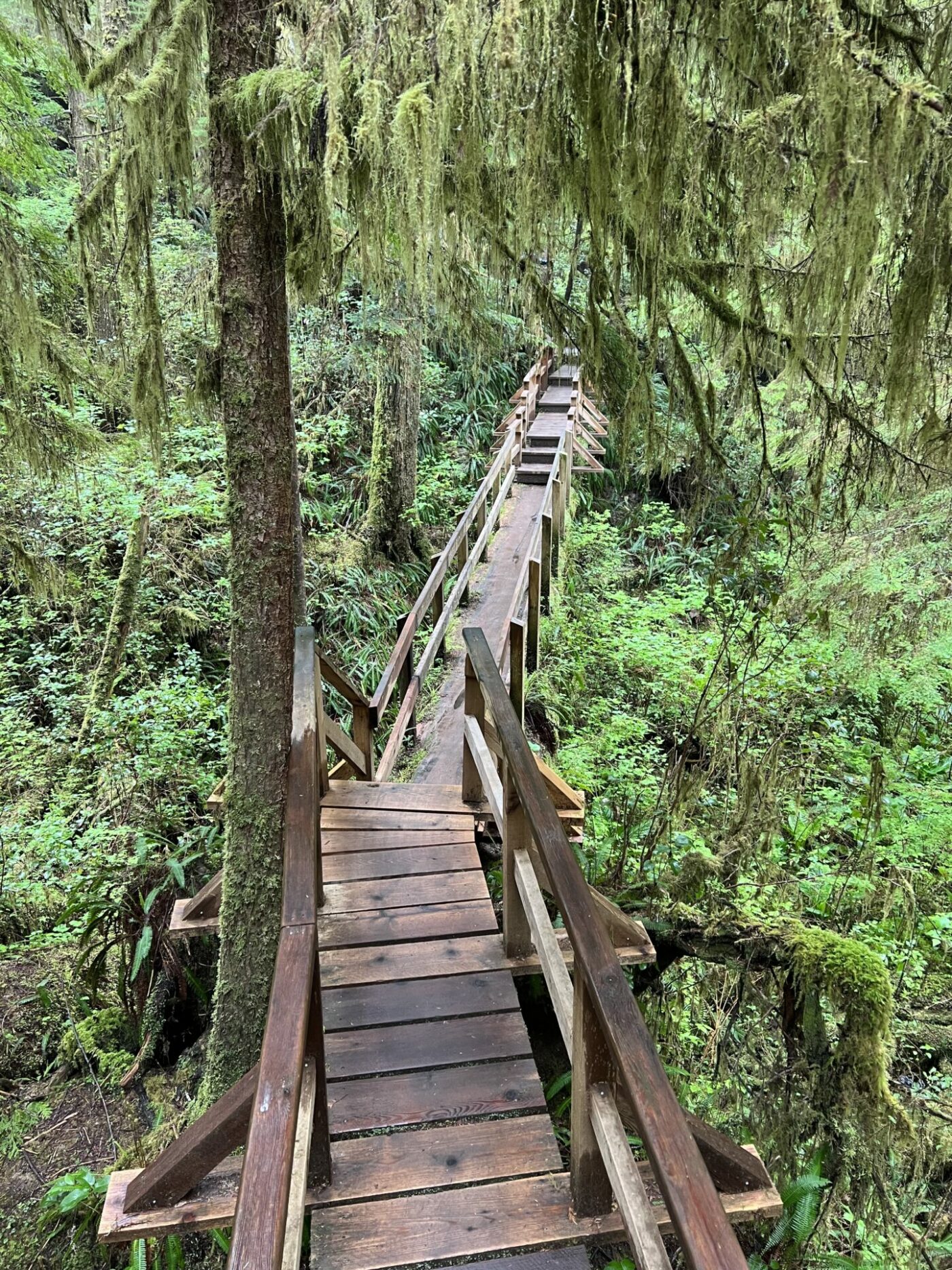
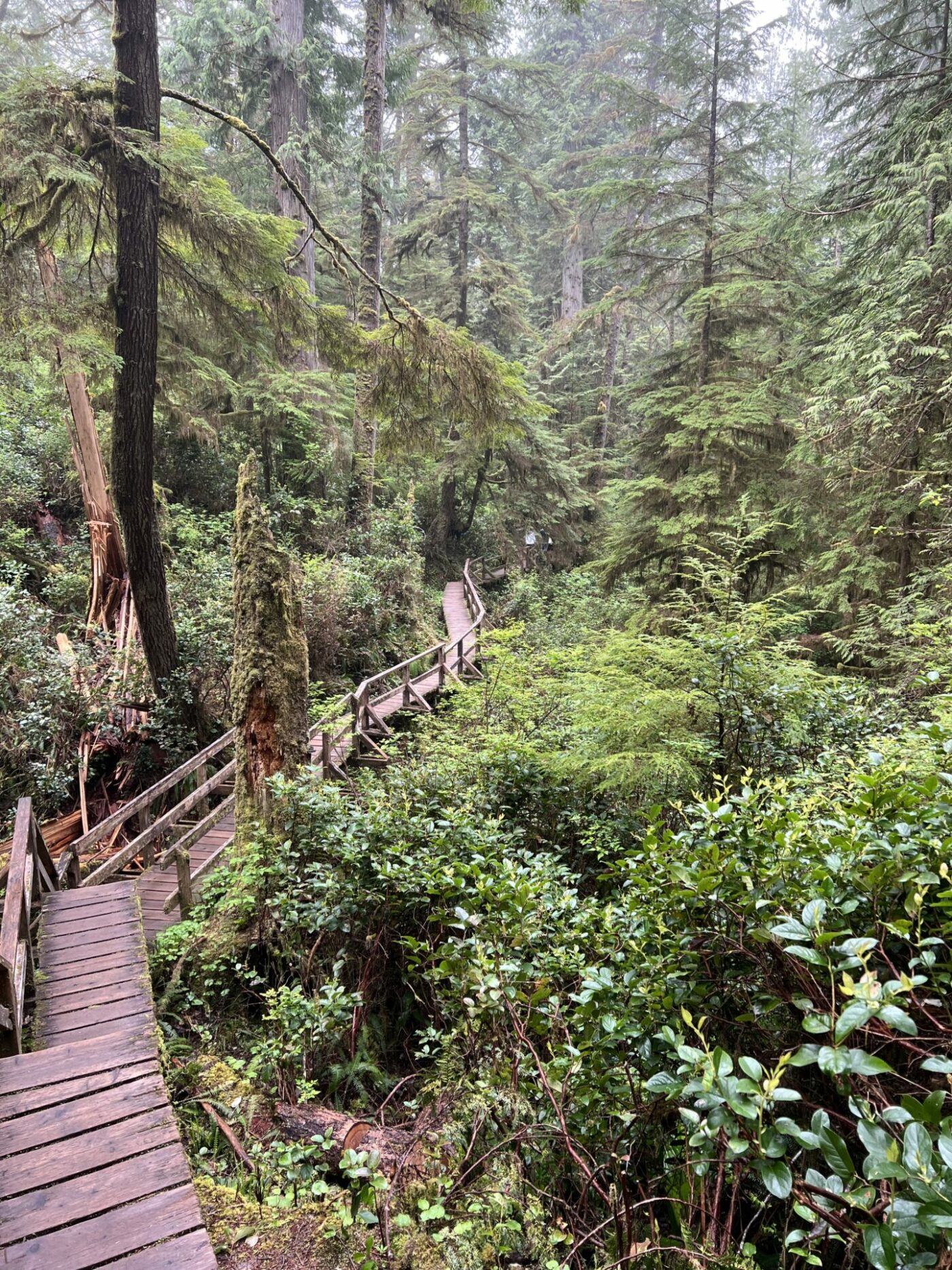
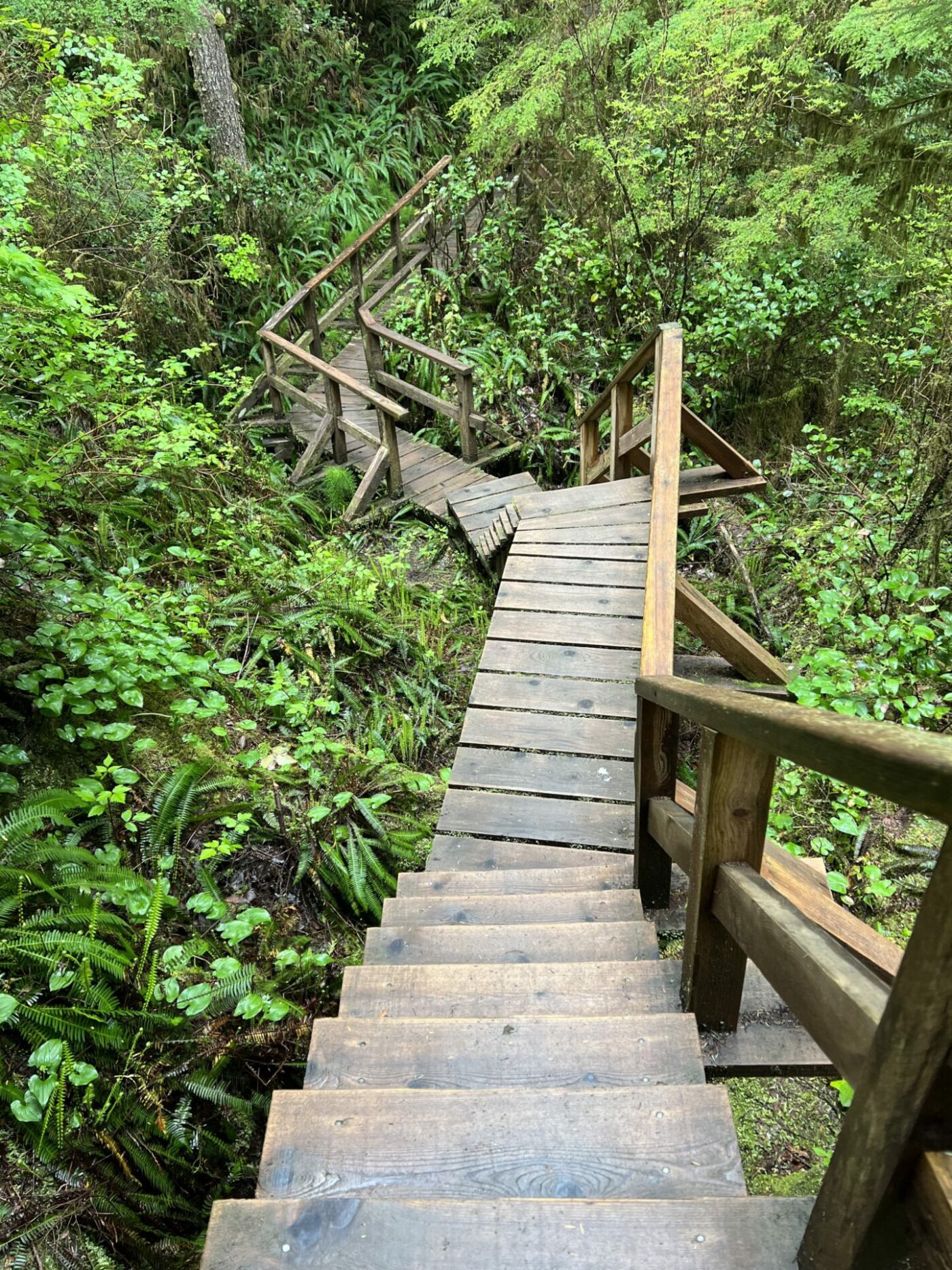
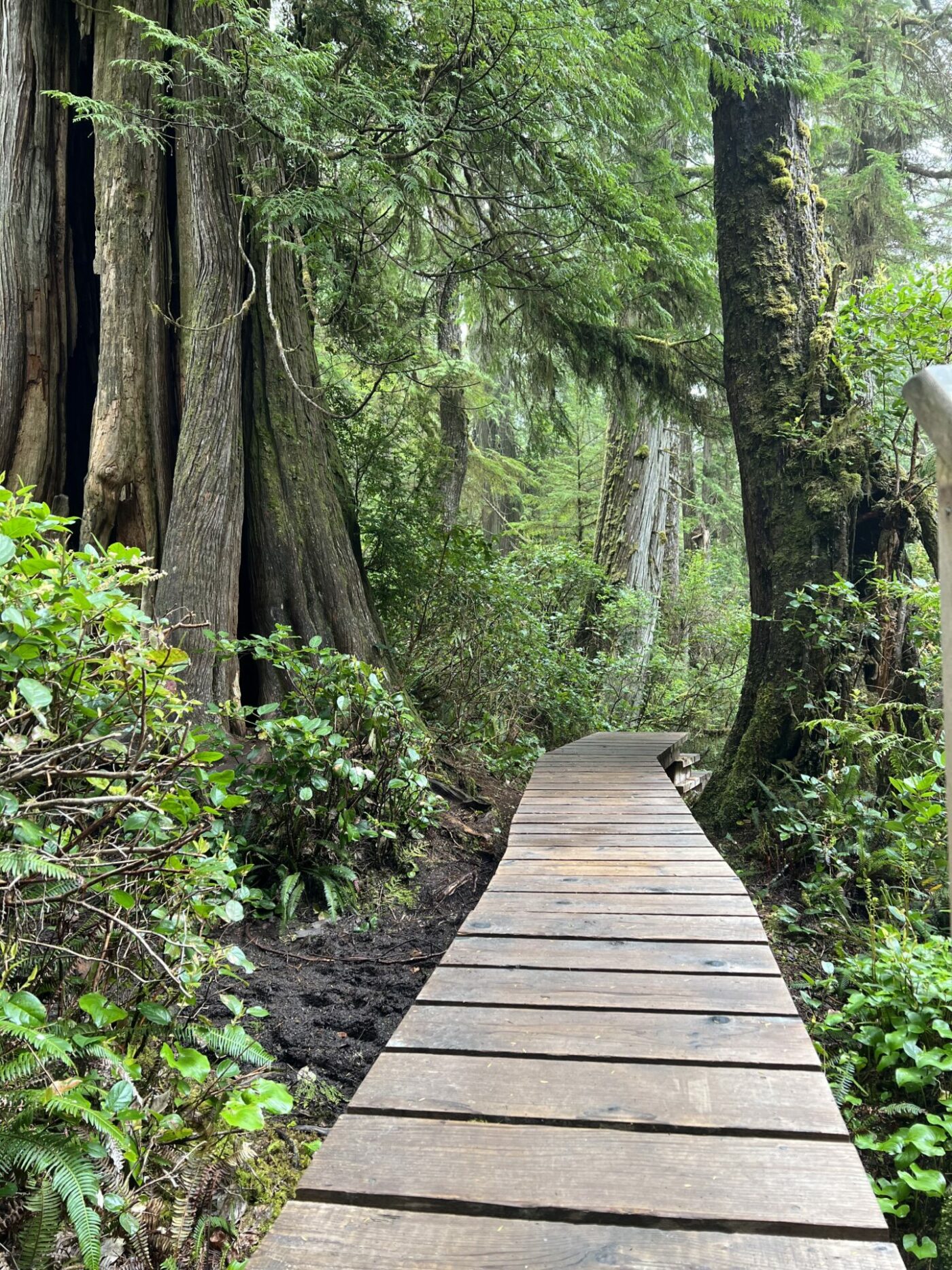
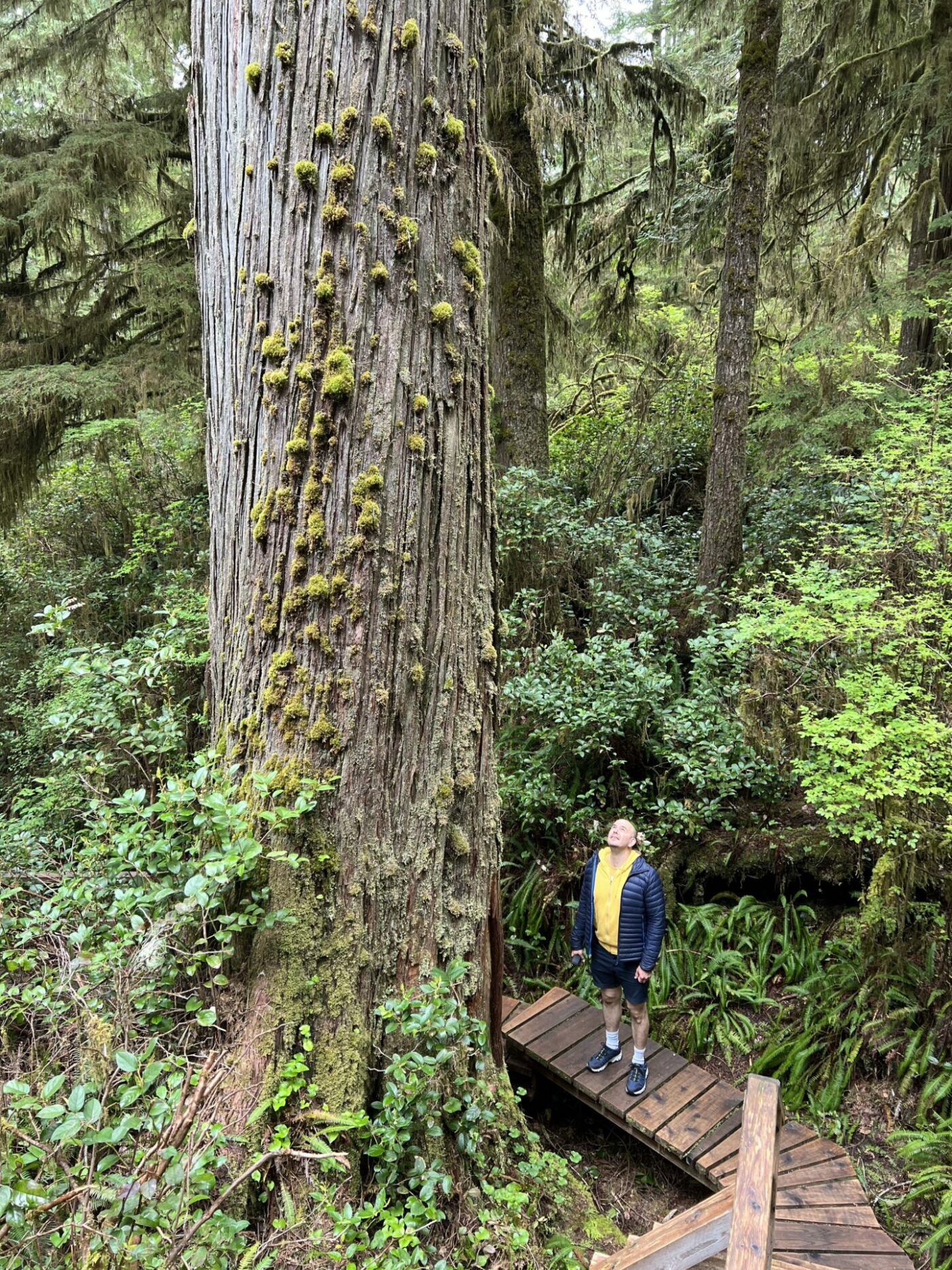
I had a feeling of connection and life in this place I have felt nowhere else. Hard to explain but I felt an emotion I had never had before, a sense of life and a sense of the forest knowing my presence. As if I were being watched from all around by this unbroken blanket of life. I’ll never be able to explain it but those old trees and every living thing around us knew we were there, and I knew that they knew it. Perhaps in a hundred years time a clever scientist will be able to explain that in the way we’re now understanding plants and fungi communicate via chemicals. But given these trees evolved long before we did, and their survival depends on animals doing and not doing certain things, logically it would make sense for them to have some kind of awareness either directly or indirectly.
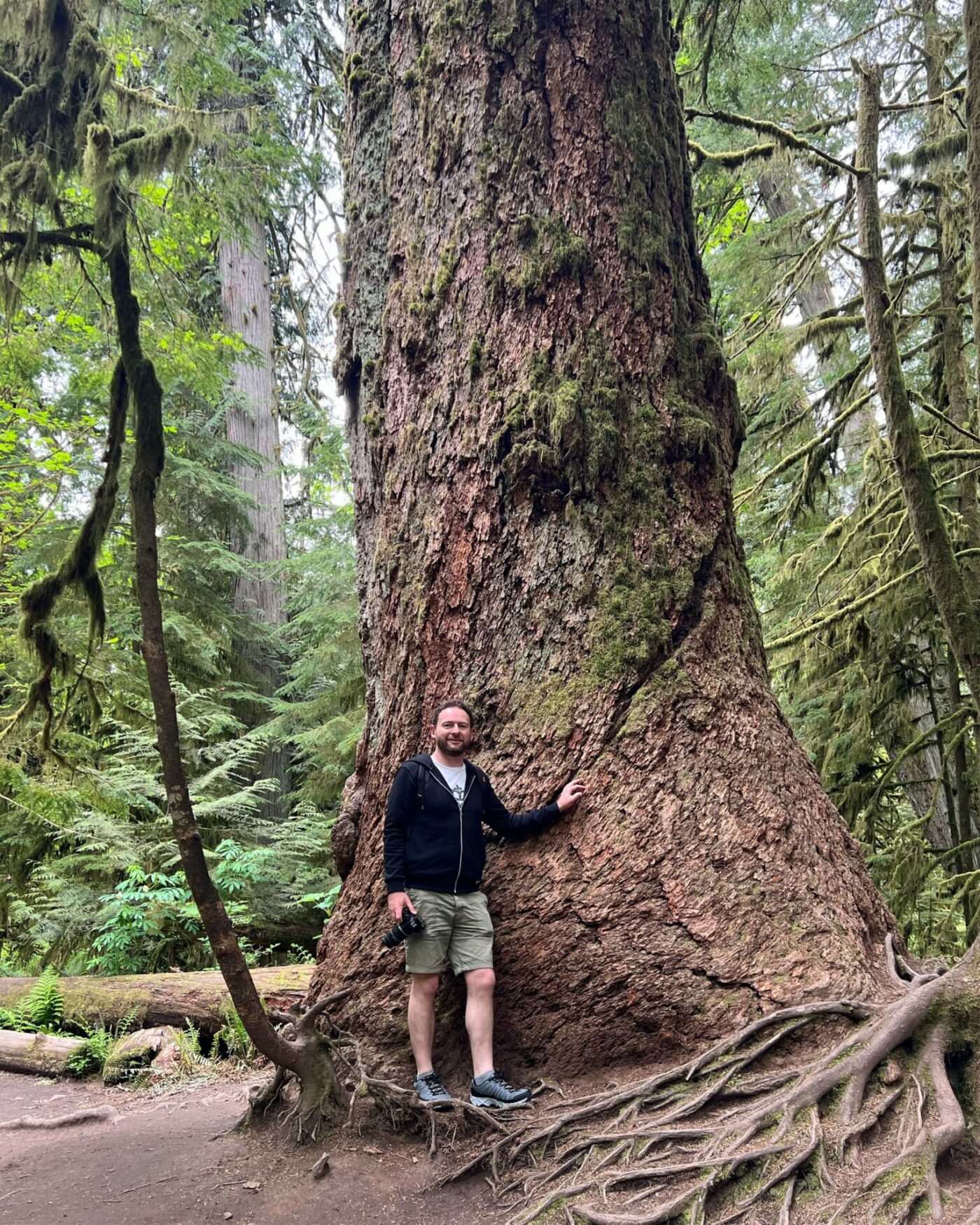
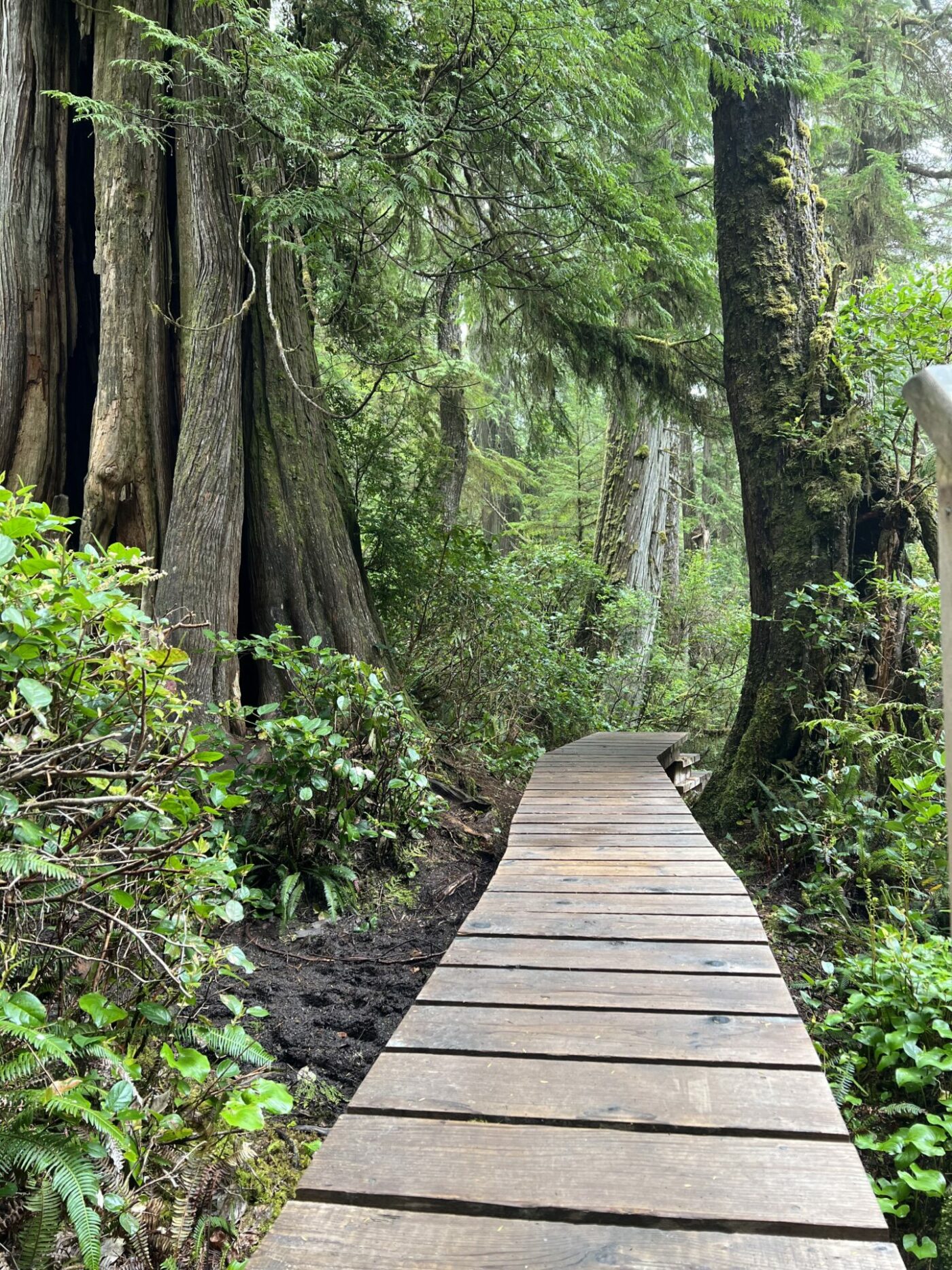
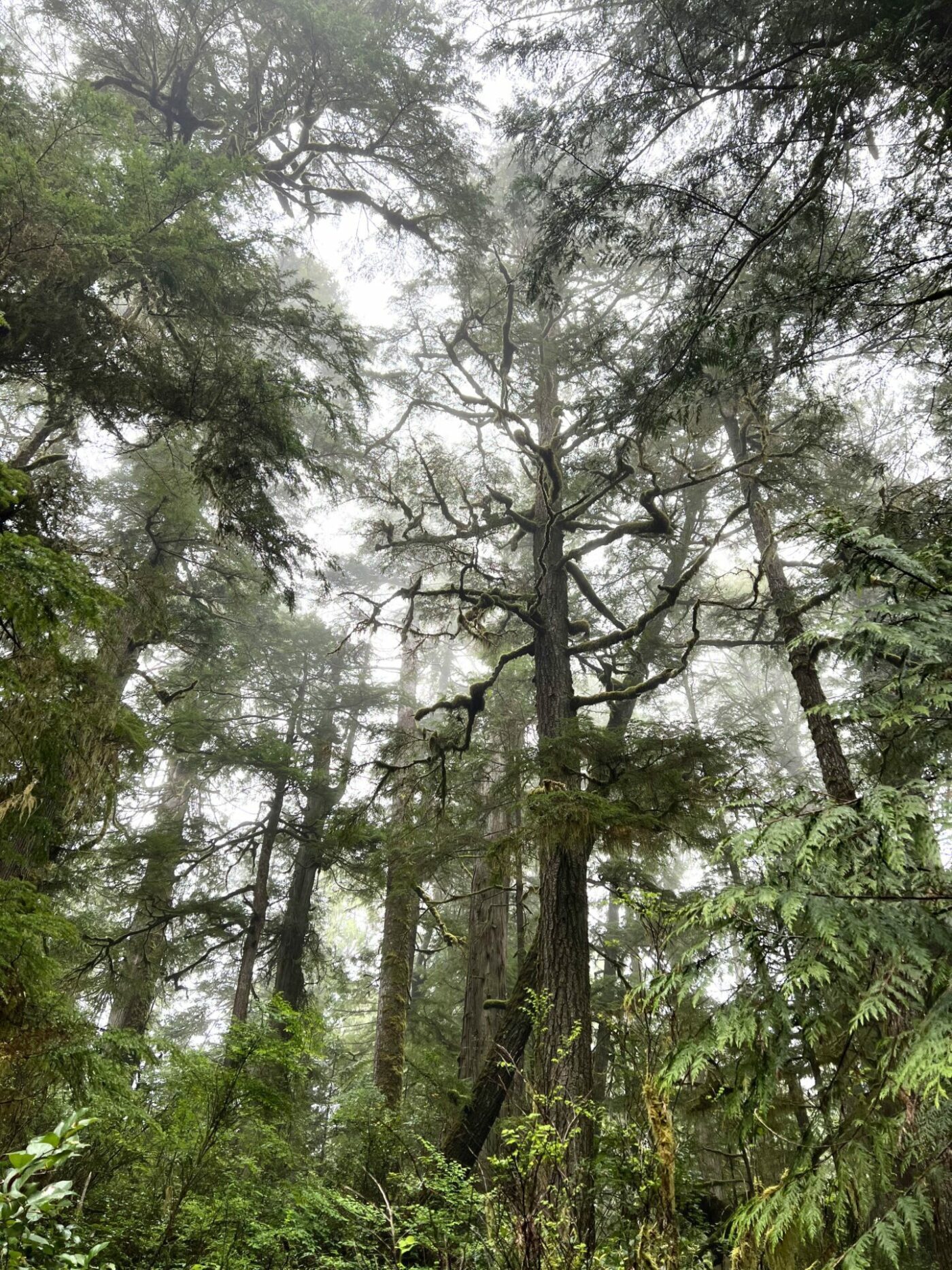
Wooden walkways have been erected that wind up and down inaccessible slopes, like a scene from a 1980s fantasy movie. They’re only a few kilometres long but give unparalleled access to these precious spaces in a way that protects them from our footprints. There are steps to wind down the steep slopes on the rainforest walk although areas of it and all other walks we went on were wheelchair friendly. It’s hard to imagine how these areas could be made fully wheelchair friendly without harming the ecosystem, perhaps someone will figure it out one day – perhaps with alternate routes. I’ve long felt the UK’s attitude toward rare plants or ecosystems need reviewing. We either don’t protect them enough or we lock them away from everyone in an attempt to preserve rare species, such as the last lady slipper orchid in the UK. I take the view that walkways like this and making rare species more accessible is the better option because the more people with eyes on them, the more protected they are and everyone has the right to access this wonder. The more people who see and learn about nature, the better protected it will be in future.
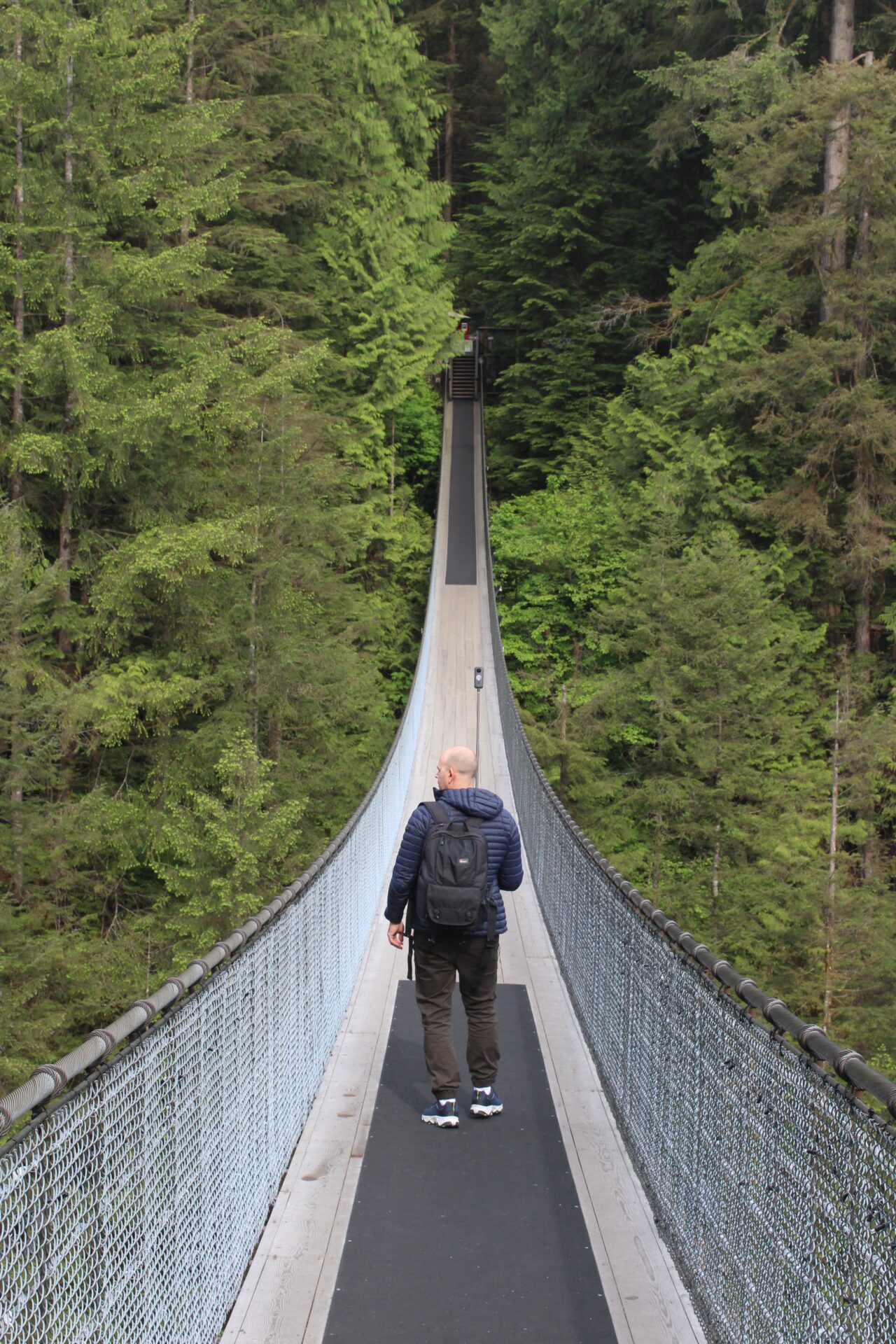
In the old growth rainforests we visited a small number of species of trees, shrubs and ground covering perennials dominated. Ferns such as Polystichum munitum, Adiantum and Struthiopteris alongside skunk cabbage, Tellima and other plants that tolerate the deep shade. Racoons, slugs, bears and deer range through these spaces. The ground soft with deep layers of centuries of decomposing plant material, it was hard to see any where it would have been possible to stand if the walkway weren’t there.
How much space does nature need?
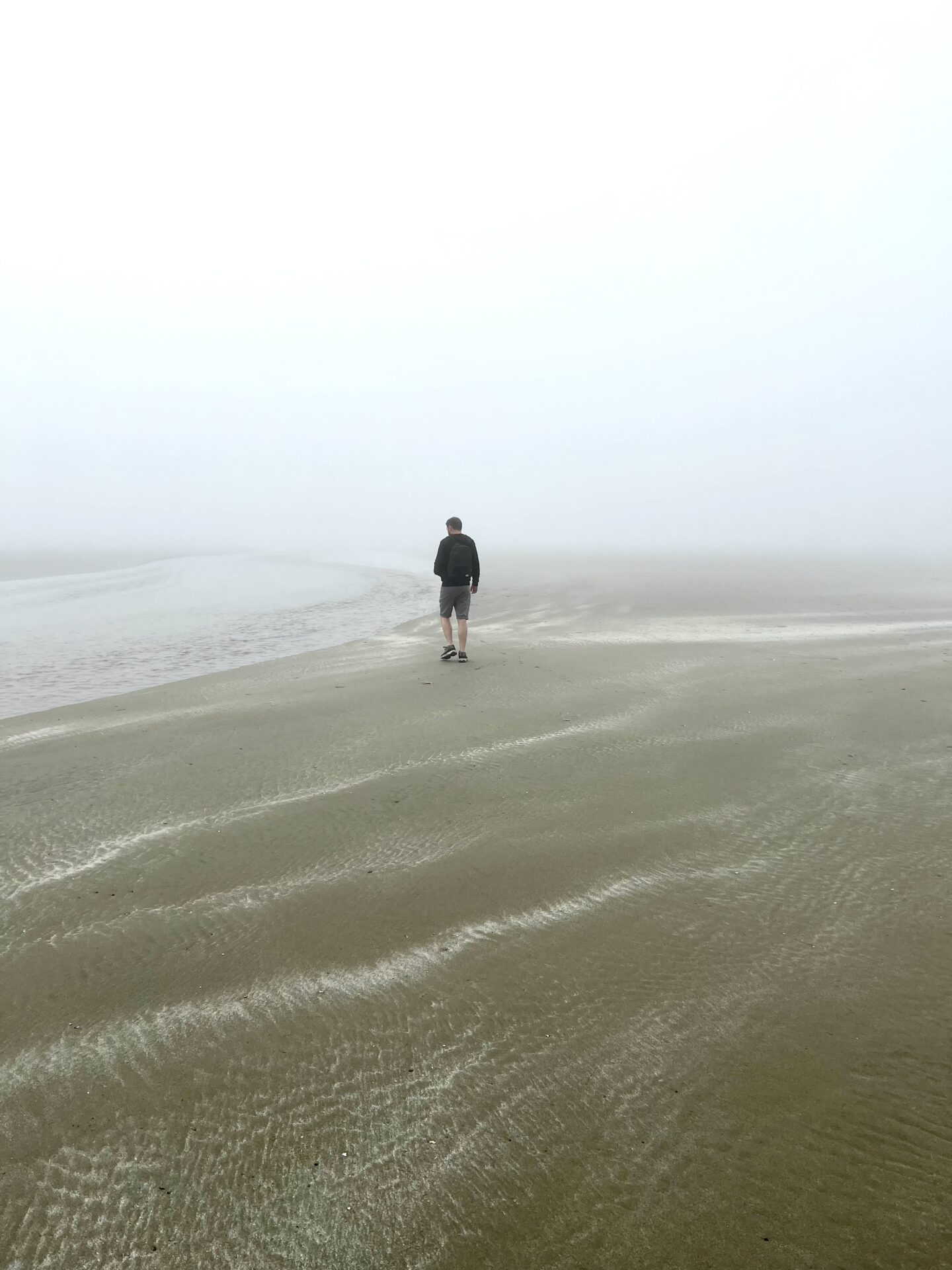

I’ve been thinking about this question for years and I’m surprised it isn’t asked by Governments the world over. How much space does nature need to thrive and continue evolving? At what point do we take away too much of the earth surface and nature begins a downward spiral, no longer evolving and progressing as it should?
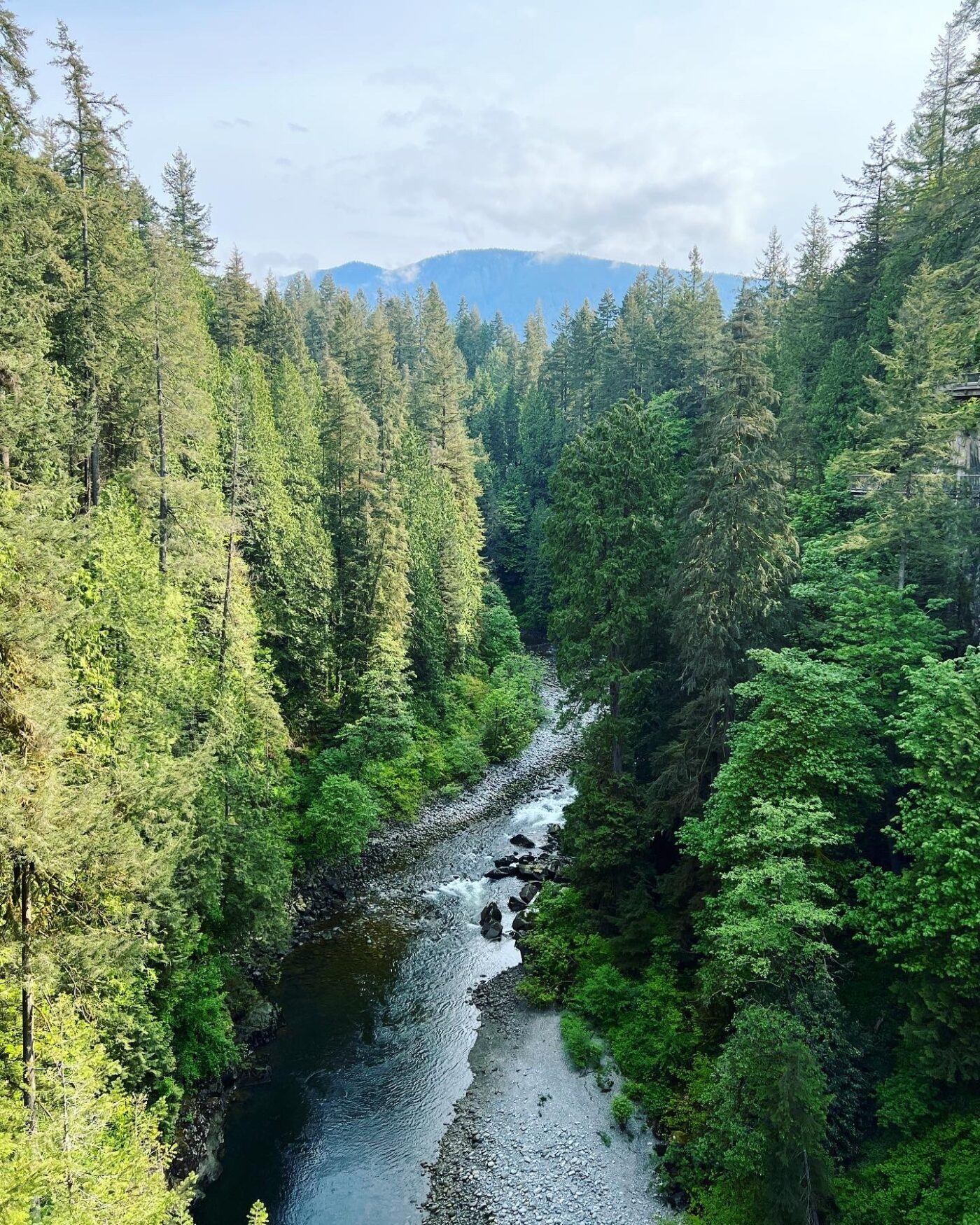
In British Columbia it was striking how much of the land is inaccessible to people. On one road trip we travelled for over 200 kilometres through rainforests without a single place to park or a walk to explore them. When we could finally stop to walk into them, the walks were only a couple of kilometres long. All of the rainforest and land closed of to people. Frustrating but also perhaps the reason why so much wildlife still lives so happily alongside people. Bears, cougars, moose and other larger animals have huge expanses to range and live without fear of being hit by a car or shot because it came too close to a house. All in all, I’d say the balance of large natural expanses with easy access for everyone to see ‘the best bits’ was about right in the areas of British Columbia we saw.
Urban sprawl and time
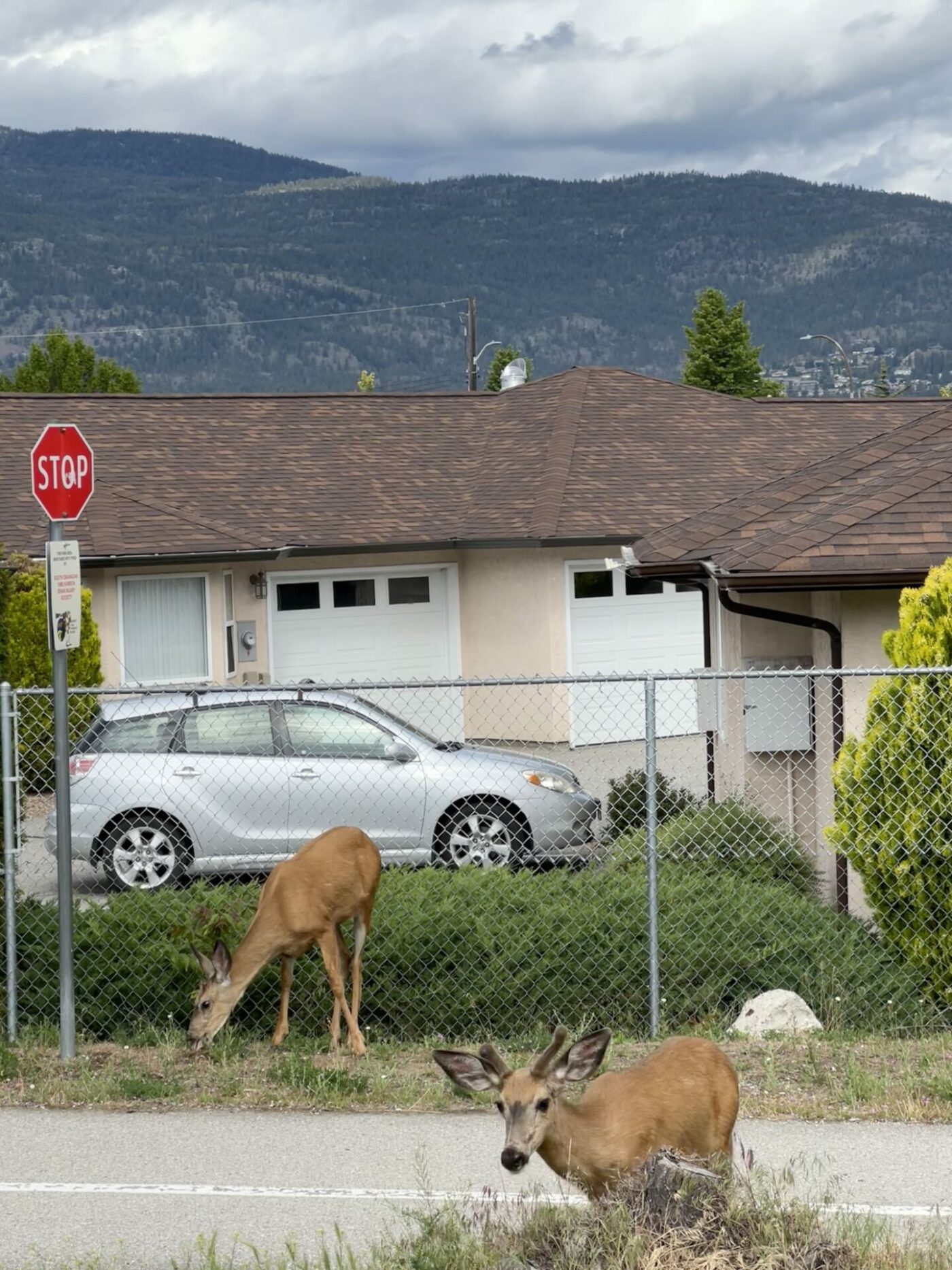
When we were in Penticton, we saw deer walking outside the house and along paths, only walking away if people came within a couple of metres. Such a difference to the roe deer near our home in Yorkshire where they’ve learnt to keep a distance of fifty metres or more. Bears are regularly seen in parts of the town too. Wildlife doesn’t keep neatly to its designated wild lands, things are more blurred. We wondered, is this a result of there being so much wild land around the town or are we seeing the beginning of the end as nature has only begun being displaced here in the last hundred years or so, Canada being relatively young in its urbanisation. Will Penticton still see deer and bears roaming its streets at the end of this century or will it go the way of the UK?
Although British Columbia has a seemingly good balance of nature vs humanity, it’s scary how fast the country has changed. With ski slopes taking up entire mountain sides, freeways along the coast and towns expanding out. How long can the balance be maintained?
Baselines
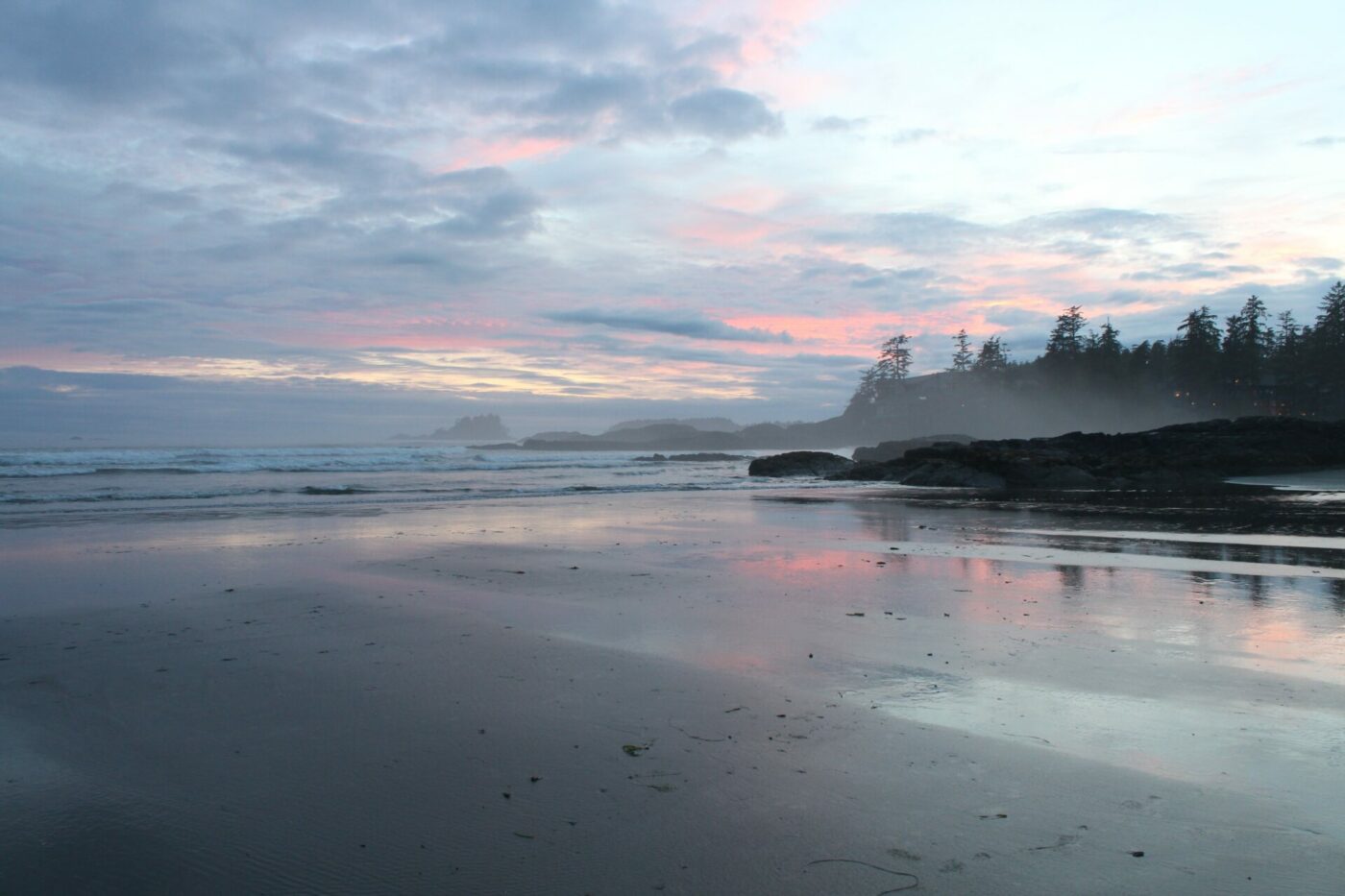
Canada (and North America) has a different view to nature than the UK. In Canada, problematic species introduced by colonists are of greater concern to the general public, whereas in the UK we seem more relaxed unless we’re told something is illegal, like Japanese knotweed. We felt this, along with Canadians’ perceived relaxed attitude to large wildlife like bears is probably to do with the age of the development of the countries. The UK was stripped of its nature centuries ago, our baseline of what nature looks like is wrong, we think farmland is nature. In Canada, true wilderness is still within living memory, indeed, even today people can walk a short distance into untouched wilderness (or restored and then untouched) to see what it’s like and experience living alongside large animals. UK residents generally don’t understand what true wild is, we fear the unknown of it and our ignorance blinkers us to ecological problems.
Gardens
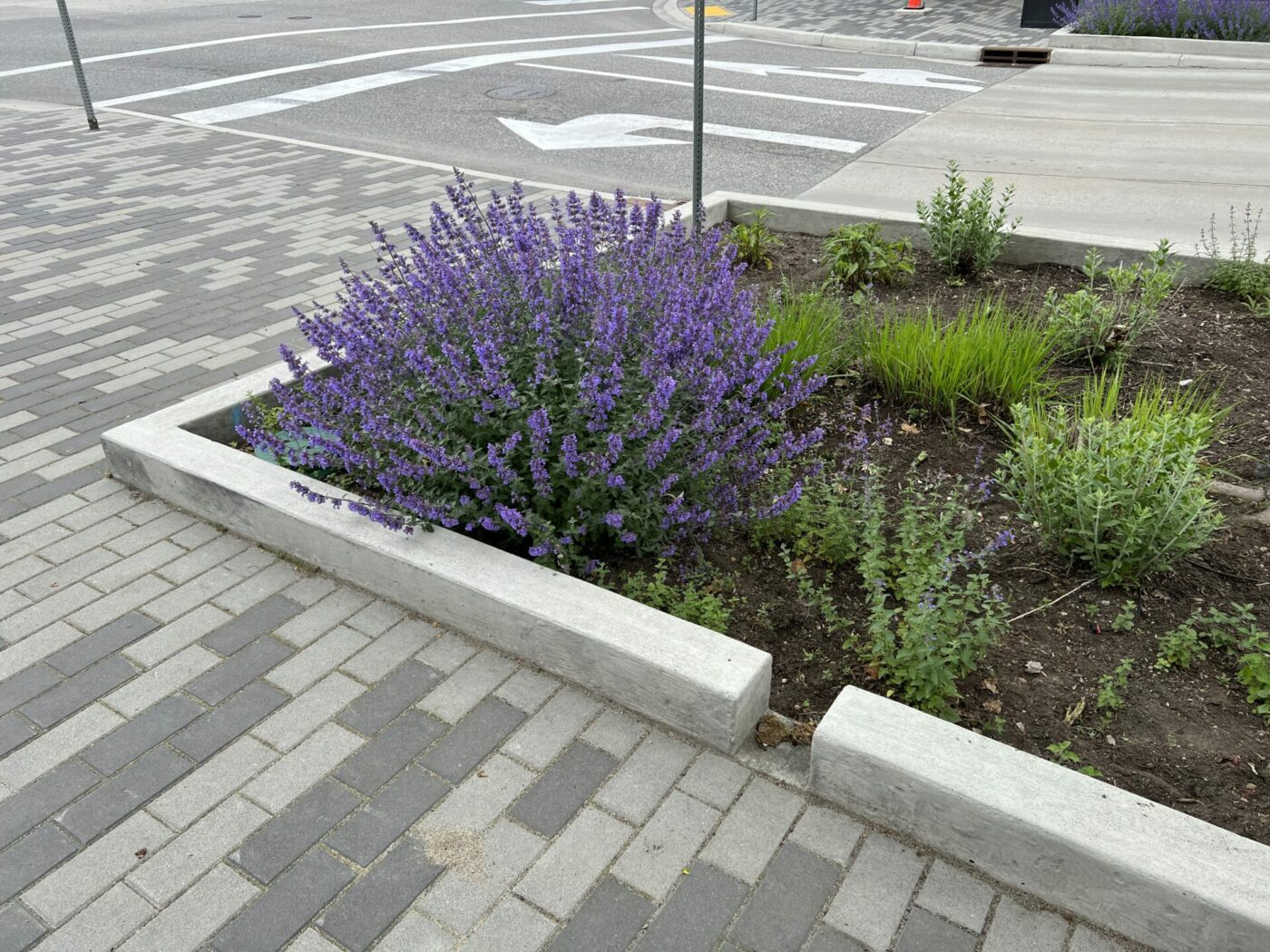
The juxtaposition of wilderness and the fenced, half bare functional yards is stark. From what we saw in British Columbia, the gardens are well loved and used, beautiful in their own way but empty to my eyes, with a few plants spaced out and mulched below to keep the soil around them bare. As a naturalistic gardener who wants to make gardens look and work like the wild, this really stood out to me. I guess when you have so much access to true wild, there is less need to bring it to your door. Perhaps the UK’s current focus on naturalistic planting comes from the fact we’ve removed our natural landscape. We don’t have any, instead we are trying to draw out an innate love of these wild spaces in our gardens. To me, the most beautiful planting I saw in Canada was in the wild areas, where everything grew tightly together in unison.
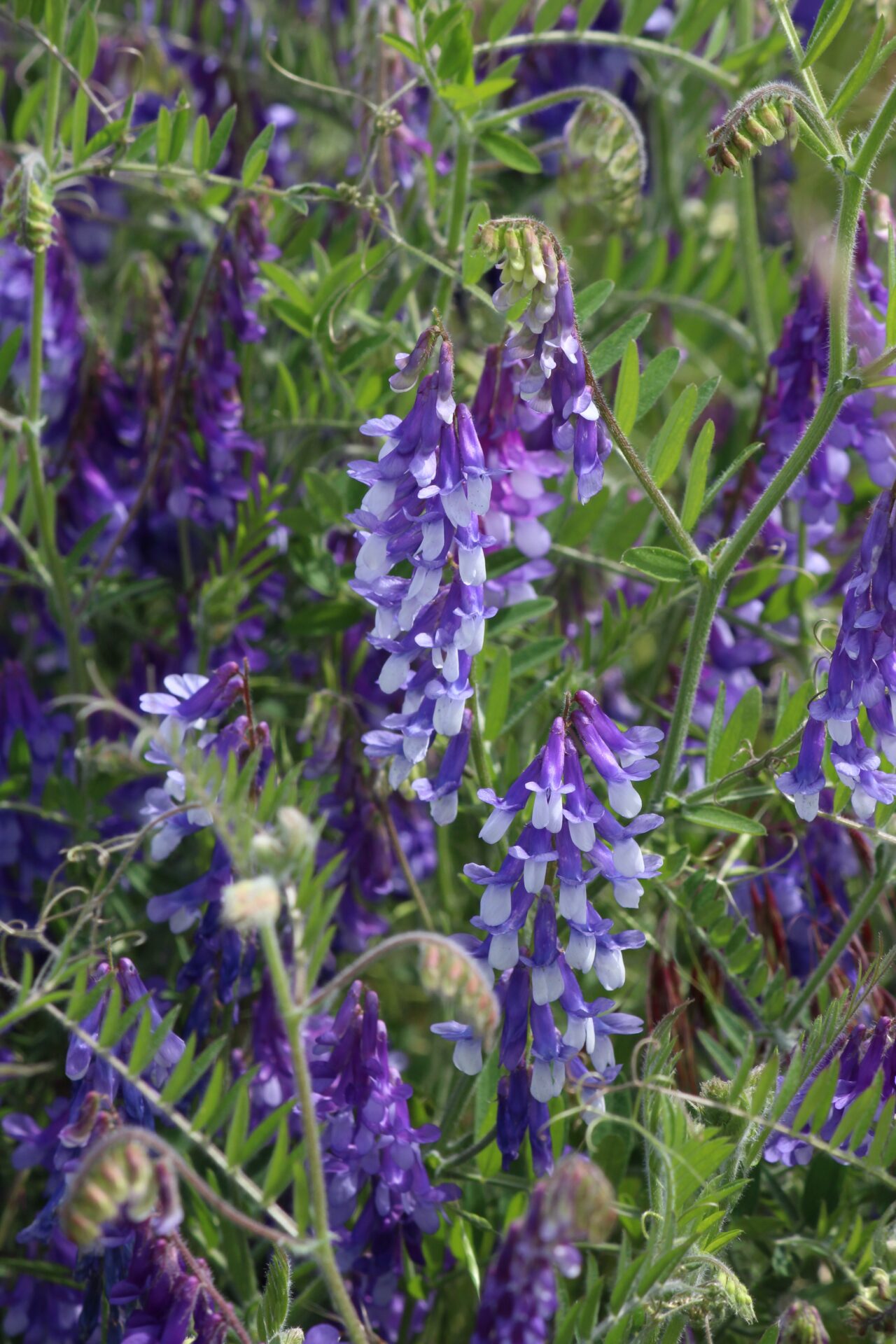
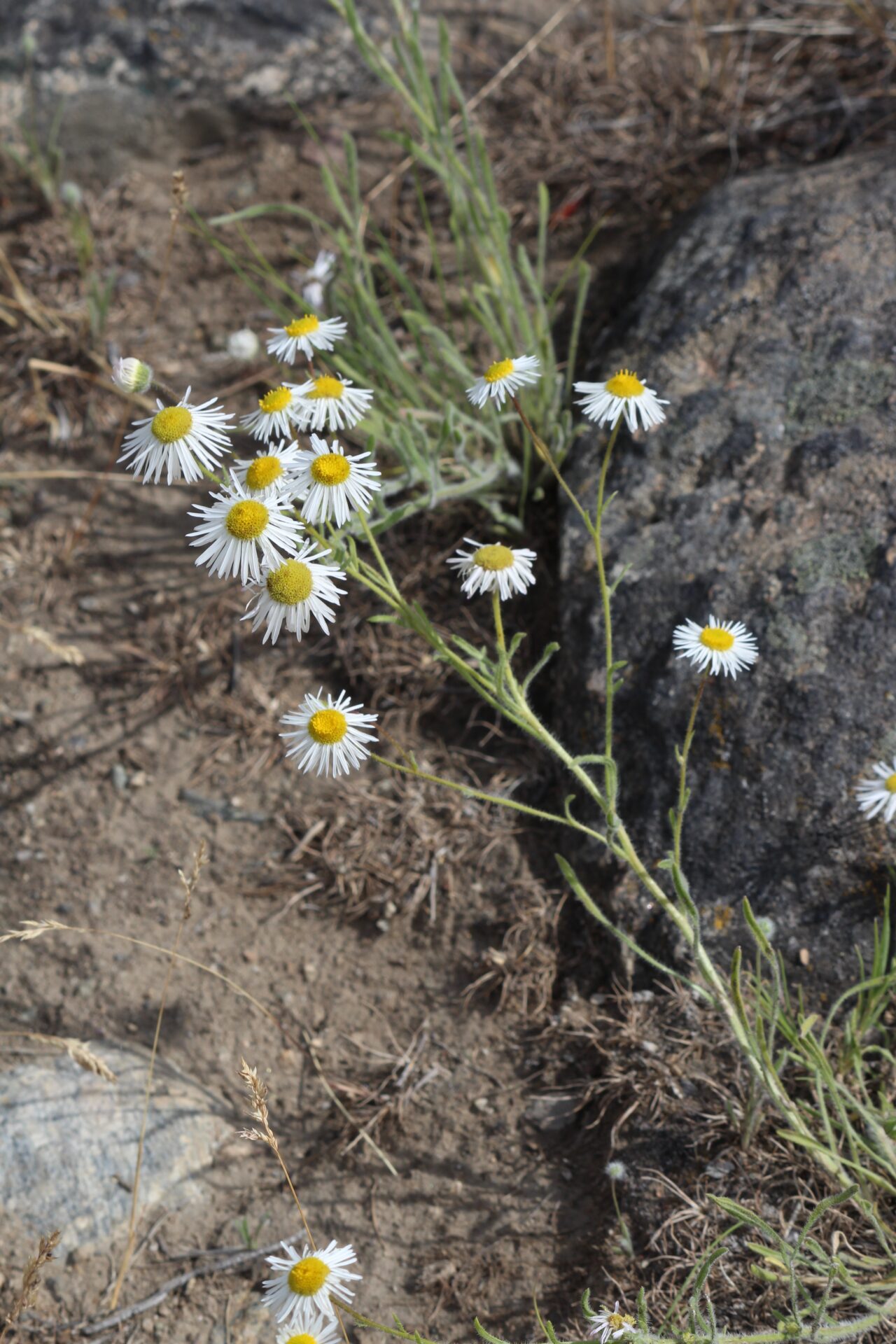
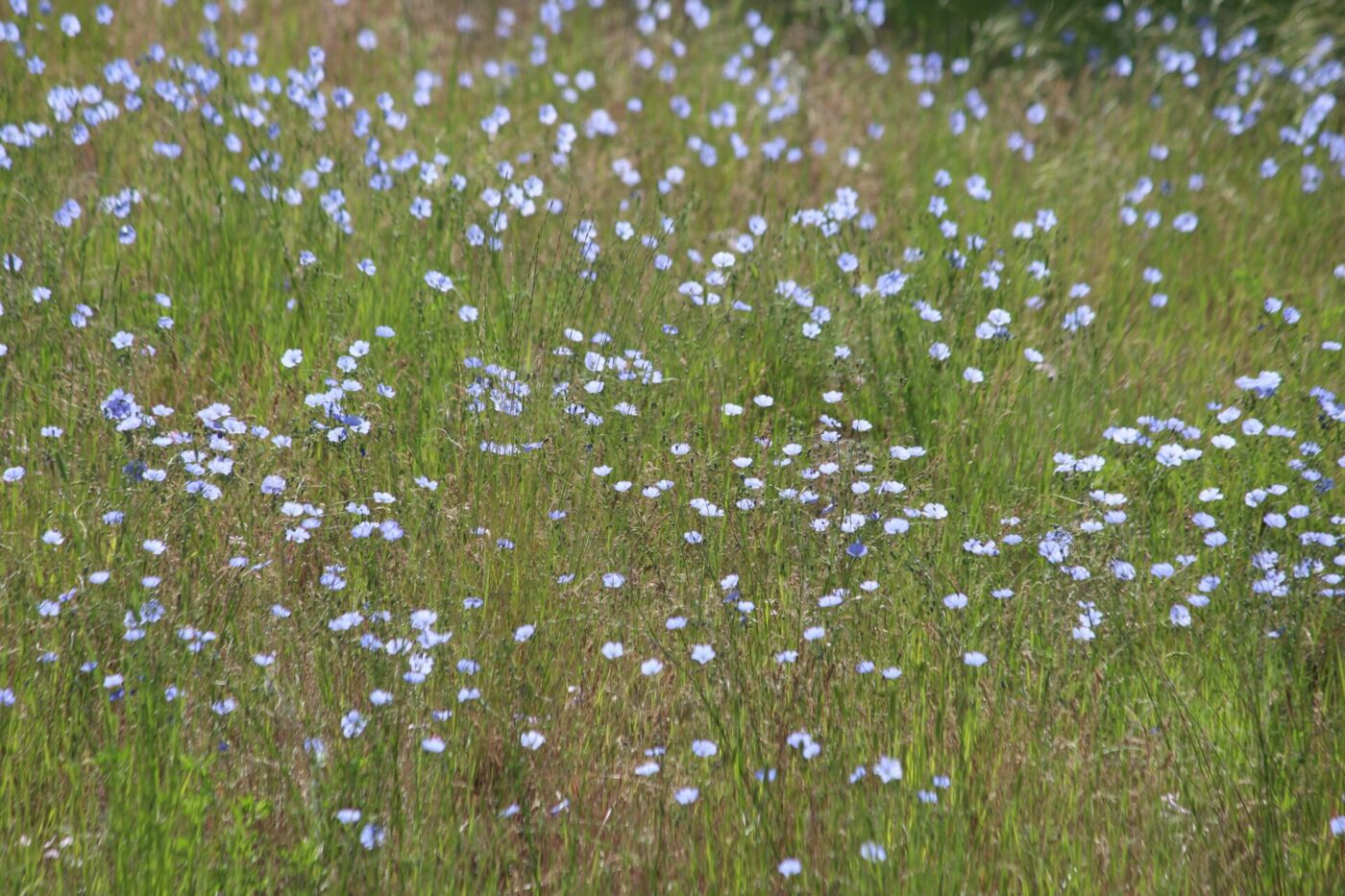
One exception was Linden Gardens near Penticton, a private garden turned public (where the wedding was held) which had a leaning toward naturalistic, if with a heightened quality from the bright colours of many rhododendron. Interesting that so much colour is used in the intentional plantings in towns and gardens, when the wild was a kaleidoscope of greens and subtler flowers. People love colour and the difference between a wild area and a planted area was obvious by the amount or lack of colourful flowers.
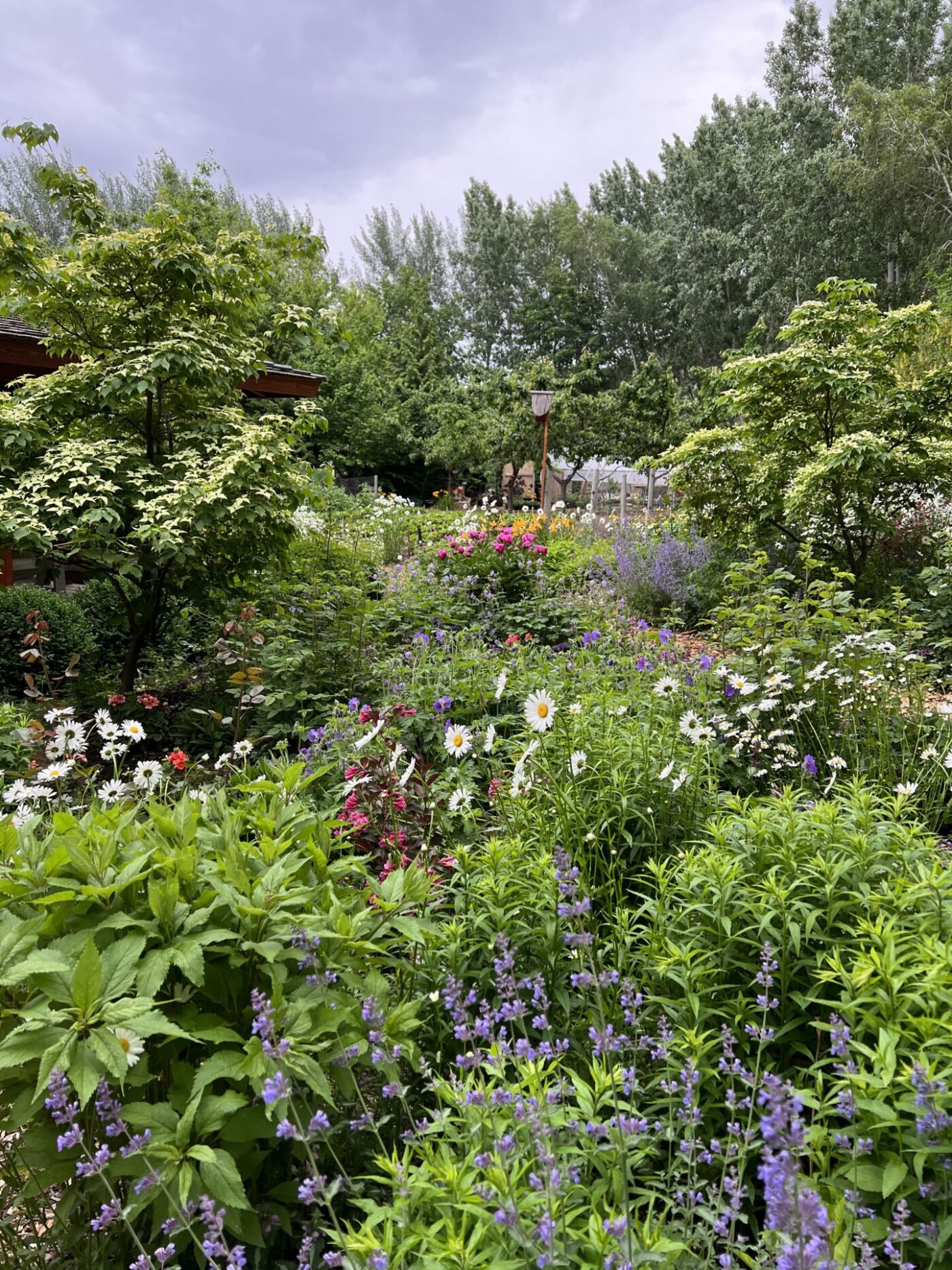
In two weeks we saw a small fraction of Canada, it is enormous and the draw to spend longer touring around it, to discover more of its secrets is strong. British Columbia is staggering, I found it difficult to take in all of its natural beauty. There is a clear love of nature, plants and gardens; one of my favourite things was spotting a city community garden opposite our hotel in Vancouver when we landed, full of vegetables, herbs and immaculate lupins. Vancouver is one of the greenest cities I’ve visited. And yet it was the perfectly preserved ecosystems that held all of my attention. As I grow older, gardens as we used to view them seem increasingly hollow and destructive. Beauty is life free to live.
